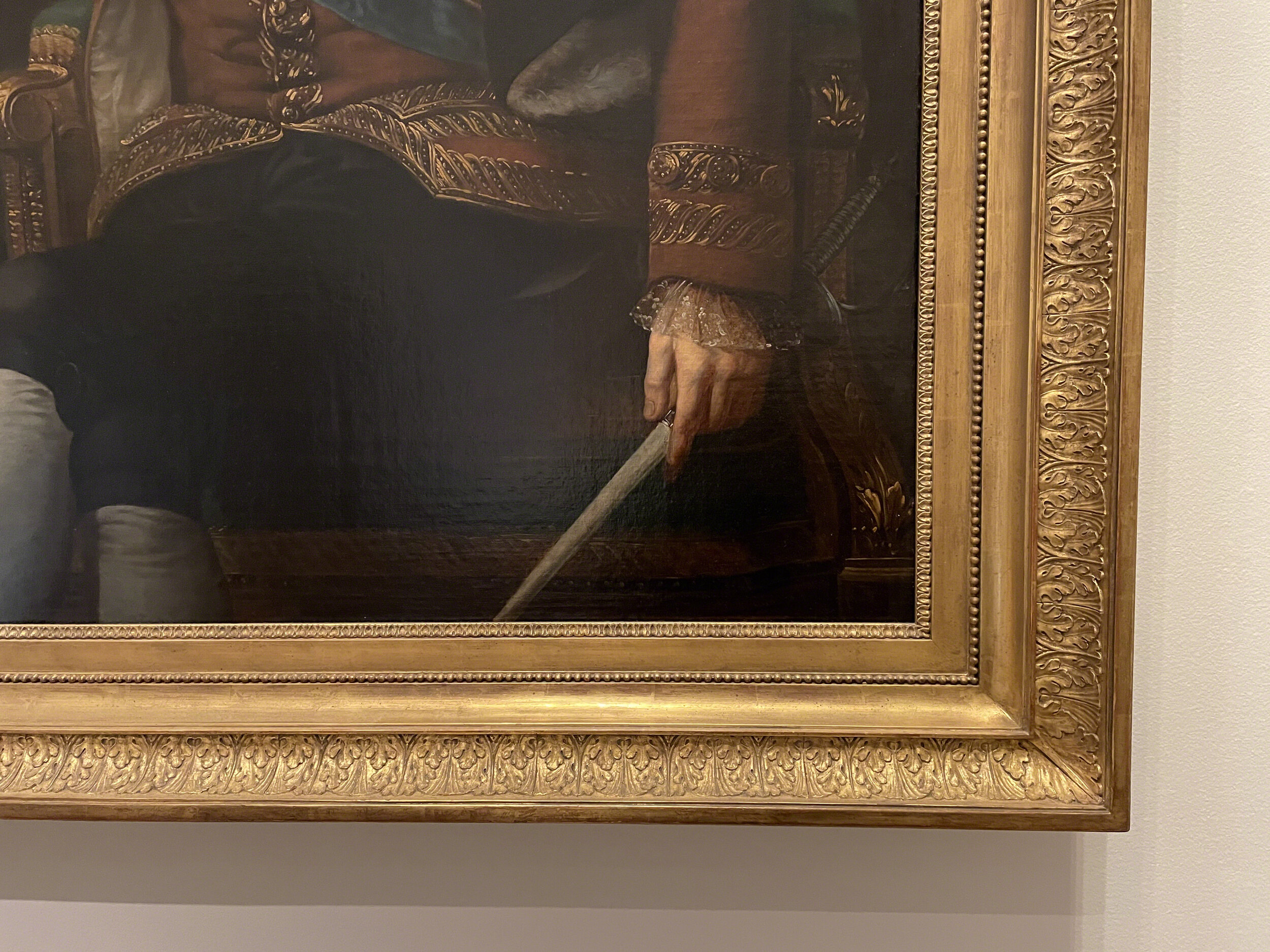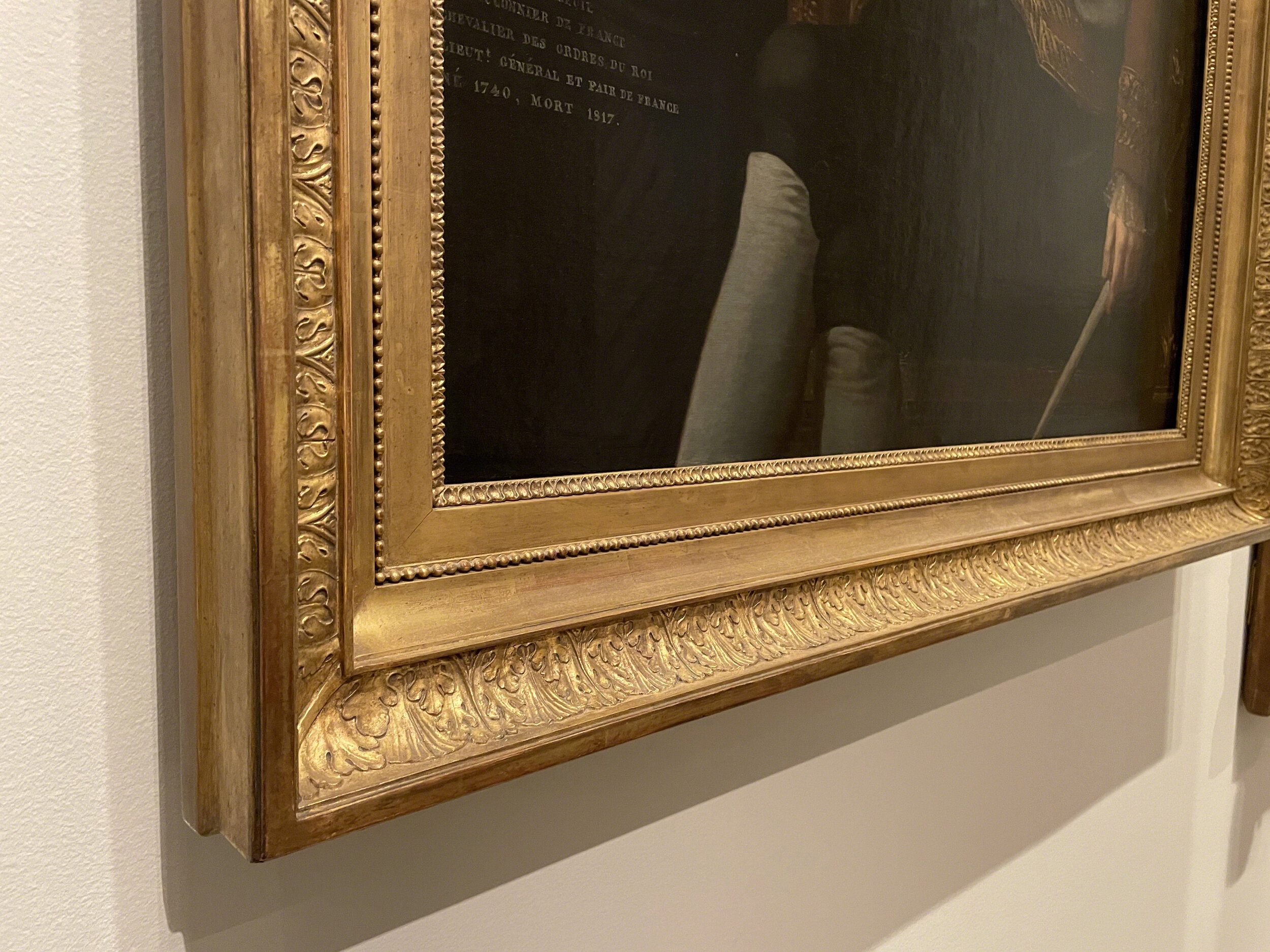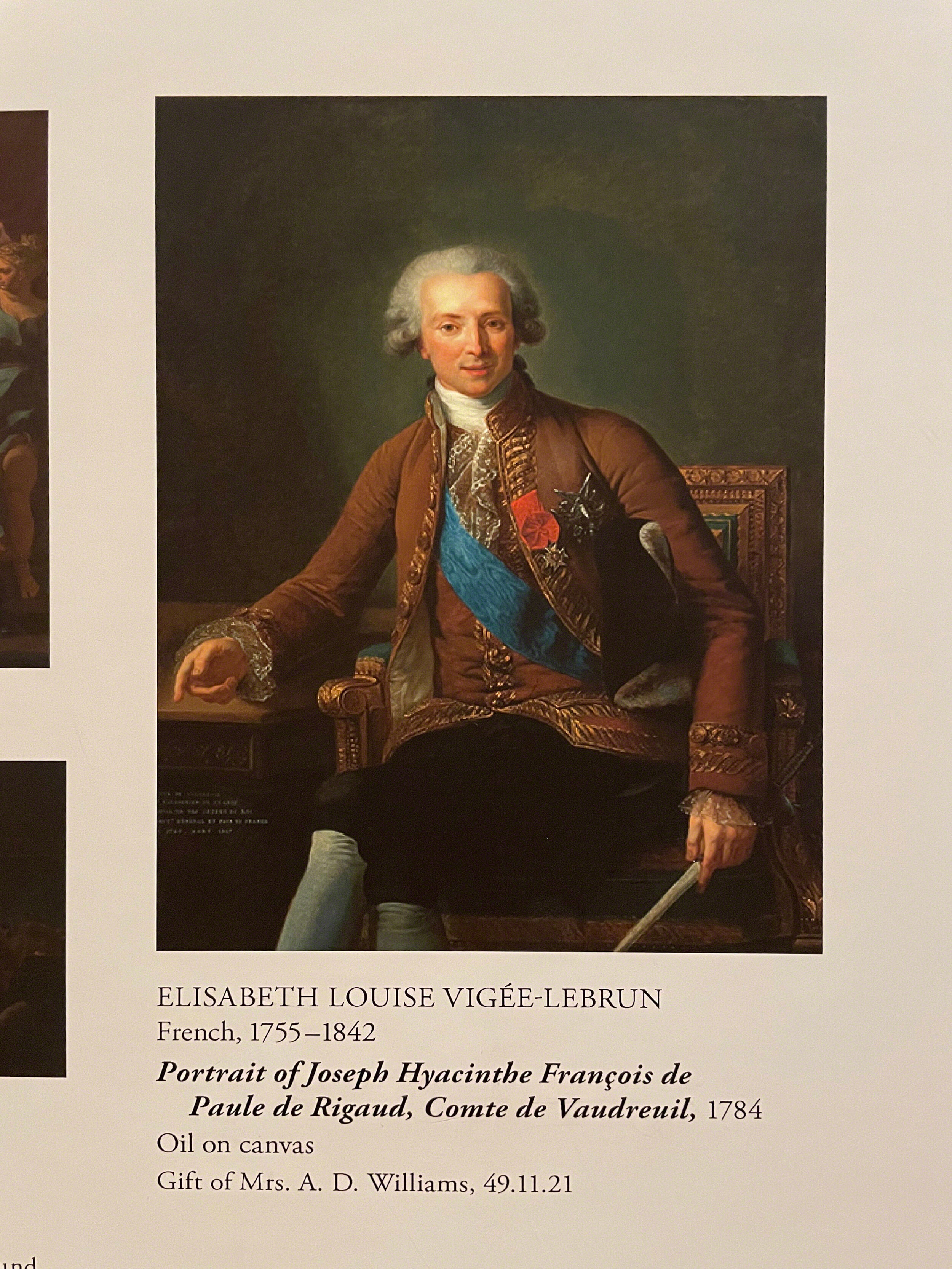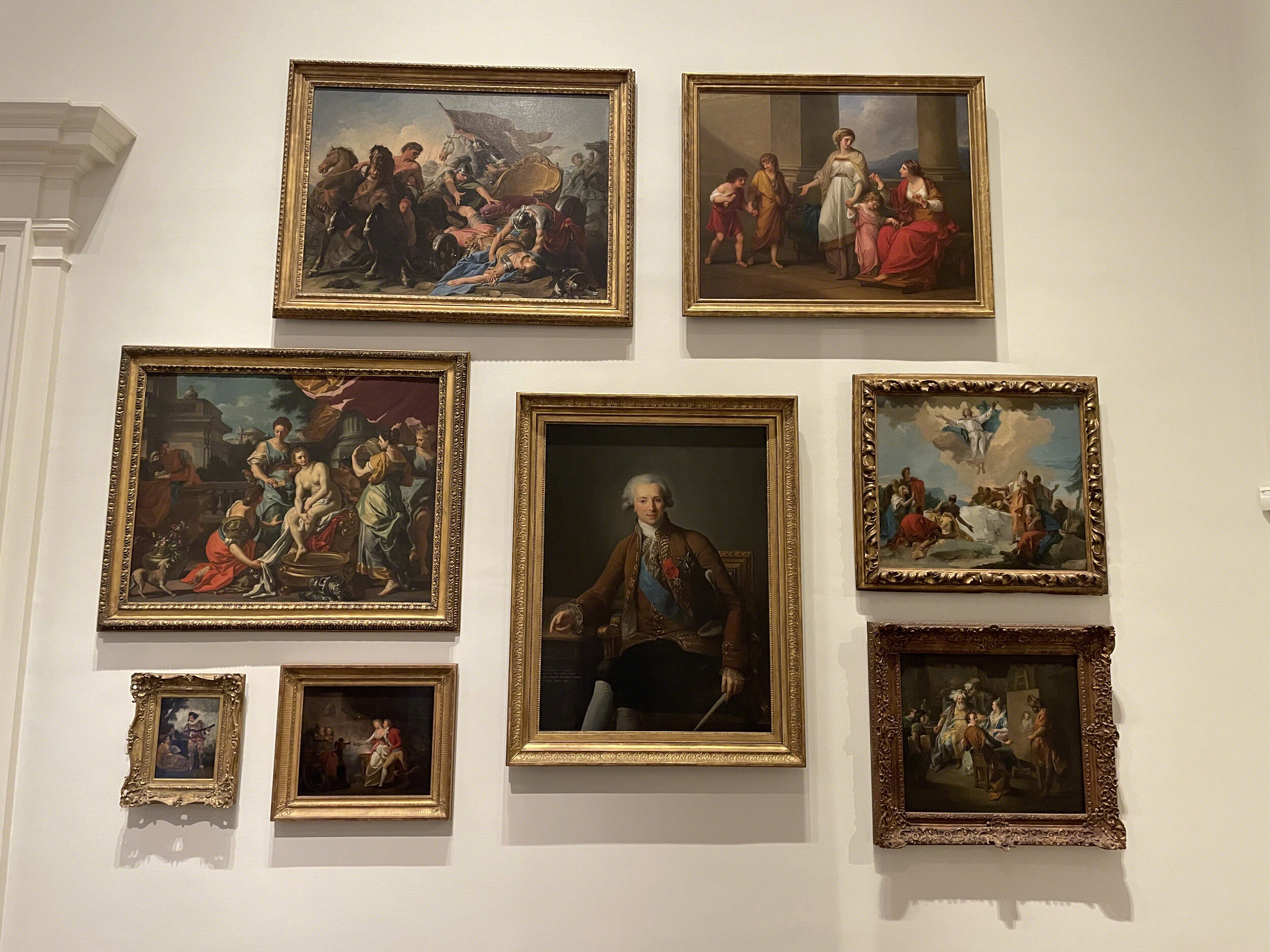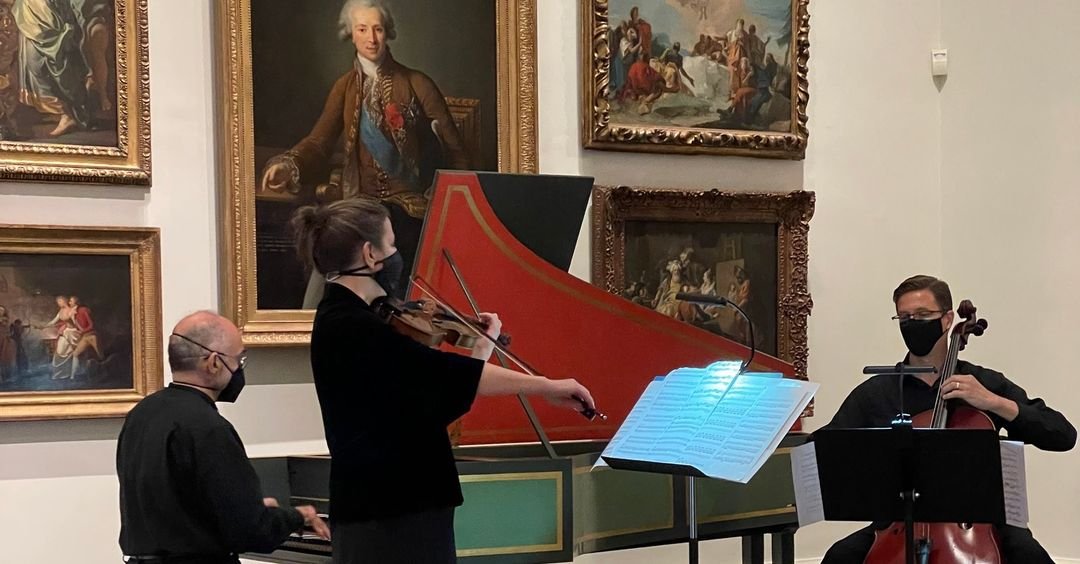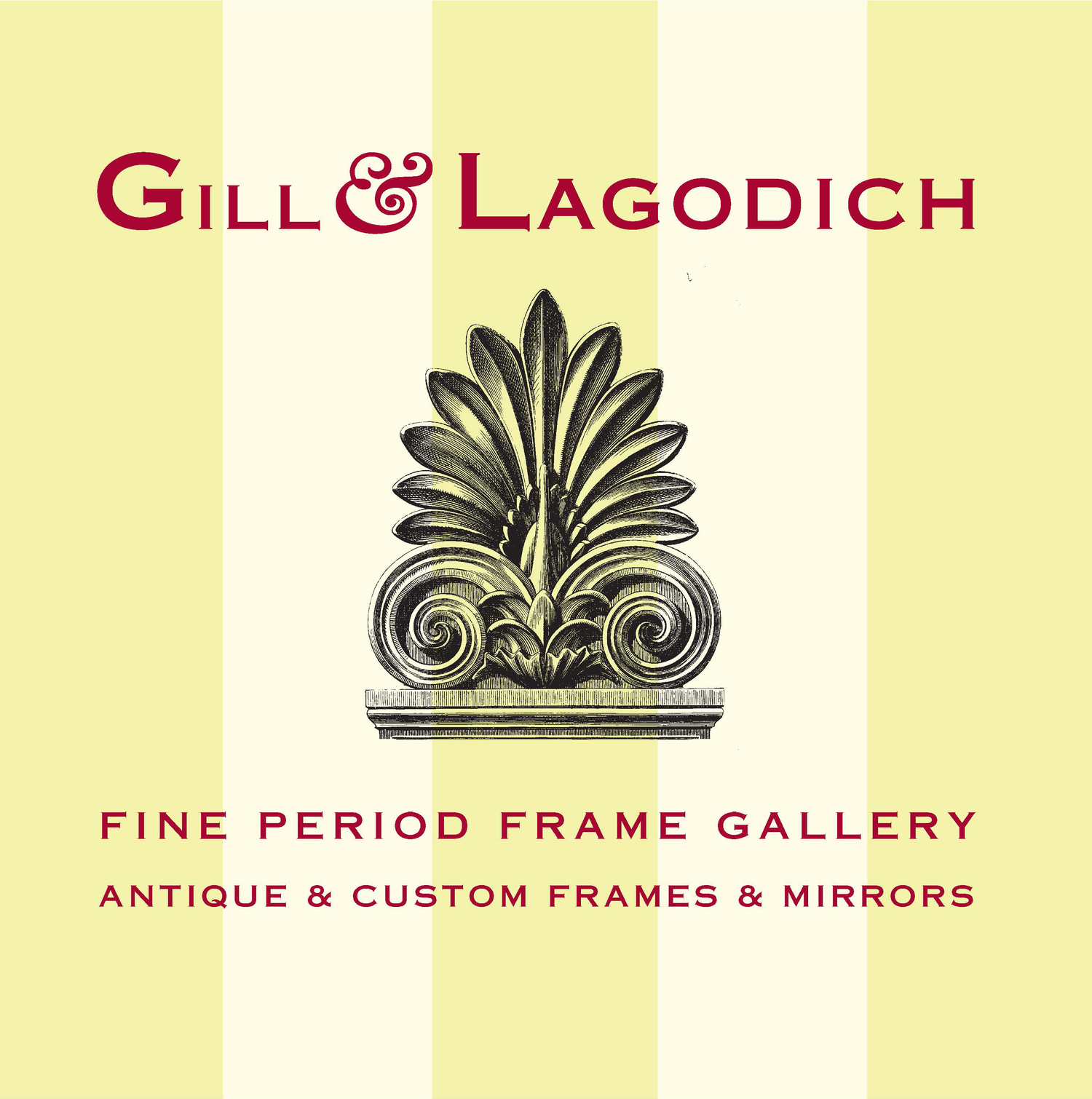VIRGINIA MUSEUM OF FINE ARTS, RICHMOND, VA
Gill & Lagodich have framed forty-three American and European paintings currently in the collection of the Virginia Museum of Fine Arts, listed in alphabetical order (please check back soon as we update images):
American Art William Merritt Chase, The Wounded Poacher (The Veteran), 1878; Ralston Crawford, Construction No. 5, 1958; Beauford Delaney, Greene Street, 1946; Frank Duveneck, pastel portrait, 1885; Thomas Eakins, Virginia Rail; Thomas Eakins, The Artist and His Father Hunting Reed-Birds on the Cohansey Marshes, c. 1874; Charles Warren Eaton, Glacier Park, ca. 1921; Philip Evergood, Street Corner, 1936; Thomas Fransioli, St. Andrews Church, 1951; Eastman Johnson, A Ride For Liberty — The Fugitive Slaves, 1862; Ernest Lawson, Cape Ann, 1915; Stanton MacDonald-Wright, Chinese Pipe and Tulips, 1926; Frederick MacMonnies, The Young Chevalier, ca. 1898; Archibald Motley, Town of Hope, 1927; Elizabeth Nottingham, Garibaldi Being Cleaned, 1935; Nehemiah Partridge, Mary Jacquelin, 18th century American; Charles Sprague Pearce, Peines de Coeur, c. 1884; John Peto, Still Life With Pipe, 1880-90; C.E. Porter, Chrysanthemums With Maroon Vase; Frederick Remington, The Pursuit, ca. 1896; Louis Comfort Tiffany, The Pottery Market at Nuremburg, 1892; Bumpei Usui, 14th Street, 1924; Max Weber, Black Chair, 1922; J. Alden Weir, portrait, 1886; and Worthington Whittredge, View of Hawks Nest, 1845-46;
European Art Eugene Boudin, Beach Scene at Deauville, 1865; Eugene Boudin, A French Fishing Fleet with a Packet Boat, 19th century; Eugene Boudin, Entrance to the Port of Le Havre, 19th century; Georges Braque, Fruit Dish and Fruit Basket, 1928; Edgar Degas, At the Milliner (Chez la Modiste), ca. 1882-1995; Jan Davidz de Heem, Still Life (with Gray Parrot and Lobster, 17th century; Raoul Dufy, L’Atelier au Bouquet (The Artist’s Studio, Perpignan), 1942; Paul Gauguin, Still Life with Bowl, 1889; [Manfredi] Dutch or French follower of Caravaggio, A Musical Group, ca. 1620s; Claude Monet, Camille at the Window, Argenteuil, 1873; Claude Monet, Field of Poppies, Giverny, 1885; Camille Pissarro, Royal Palace, Hermitage, Pontoise, 1879; Philip Reinagle, Portrait of An Extraordinary Musical Dog, 1805; Georges Seurat, Maisons et Jardin, 1882; Alfred Sisley, Wildflowers, 1875; Kees Van Dongen, Haystacks, ca. 1904-1905; Vincent Van Gogh, Daisies, Arles, Summer, 1888; and Elisabeth-Louise Vigée-LeBrun, Portrait of the Comte de Vaudreuil, 1784.
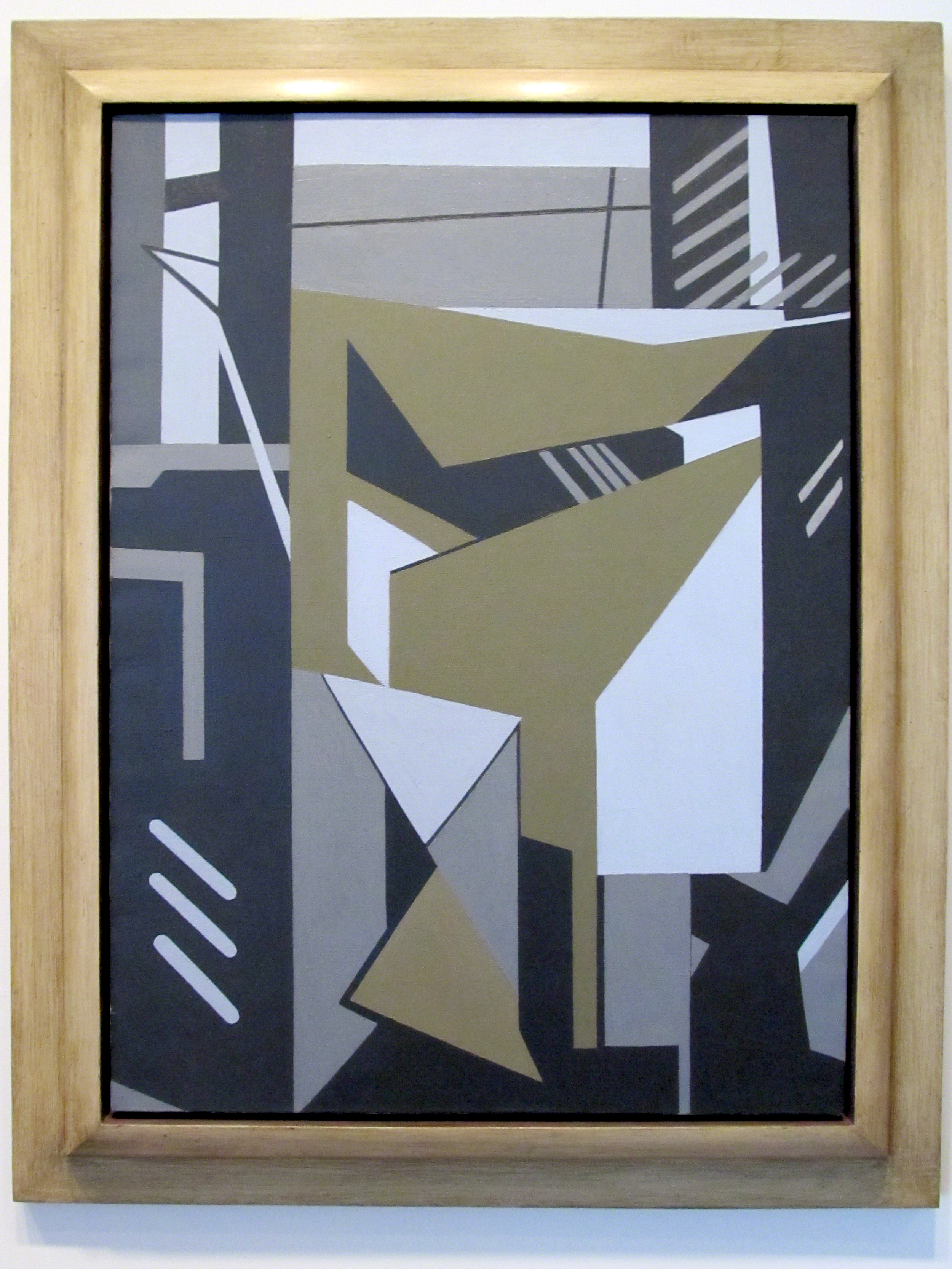
RALSTON CRAWFORD (1906 – 1978)
Construction No. 5, oil on canvas, 36-1/8” X 26-1/8”, c. 1950s American Modernist painting frame; patinated, painted wood; reverse bolection profile. “Ralston Crawford, like his senior colleague Charles Sheeler, established a critical reputation in the 1930s New York art world with crisply defined Precisionist paintings of the American industrial landscape. However, his most inventive compositions followed the emergence in the late 1940s of abstract expressionism, a movement that all but sidelined the artist’s subjective geometric work. This image dates from a pivotal moment in Crawford’s career when he was perfecting a bold abstract style characterized by a simplified cubism and restricted color scheme. Construction #5 is linked to the Diesel Construction Company (one of the era’s largest general contracting firms), which commissioned ten New York artists to interpret its skyscraper project then rising at 100 Church Street in Lower Manhattan. According to the artist’s son Neelon Crawford, he and his father visited the site on various occasions, “climbing to the highest point possible during the erection of the steel structure.” The experience inspired a series of abstract paintings (as well as drawings and photographs, two examples of which are also owned by the museum), Construction #5 being the most dynamic and pictorially complex.” —museum label
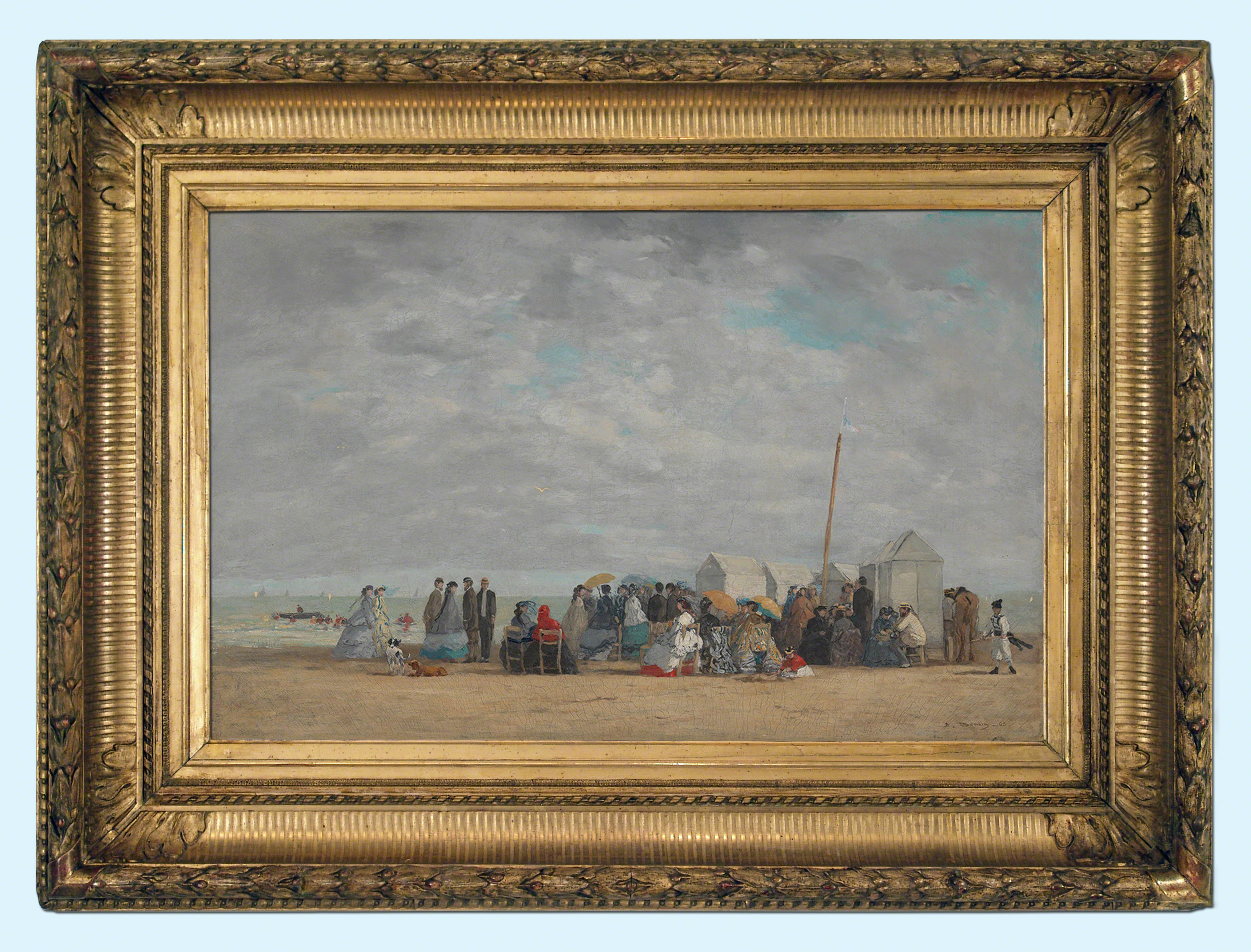
EUGENE BOUDIN (1824 – 1898)
Beach Scene At Deauville, 1865, oil on canvas, 16-1/2" x 25-5/8", period 19th-century French Neoclassical-revival frame, gilded applied composition ornament on wood. “The sea captivated Eugène Boudin, the son of a mariner, and his works depict a wide range of marine interests and activities, from the new fashion of bathing to more workaday pursuits like fishing and boating. In the 1860s, Boudin turned his attention to the visitors populating the new beachside resorts of Trouville and Deauville. With the completion of railway lines into the area, middle-class Parisians could easily reach the channel coast for leisure. Boudin portrayed such subjects with ambiguity—once referring to upper-class Parisians as “gilded parasites”— yet he also remarked, “Don’t the bourgeois . . . have the right to be fixed on canvas, to be brought to the light?” —museum label. Collection of Mr. and Mrs. Paul Mellon, 2012.60
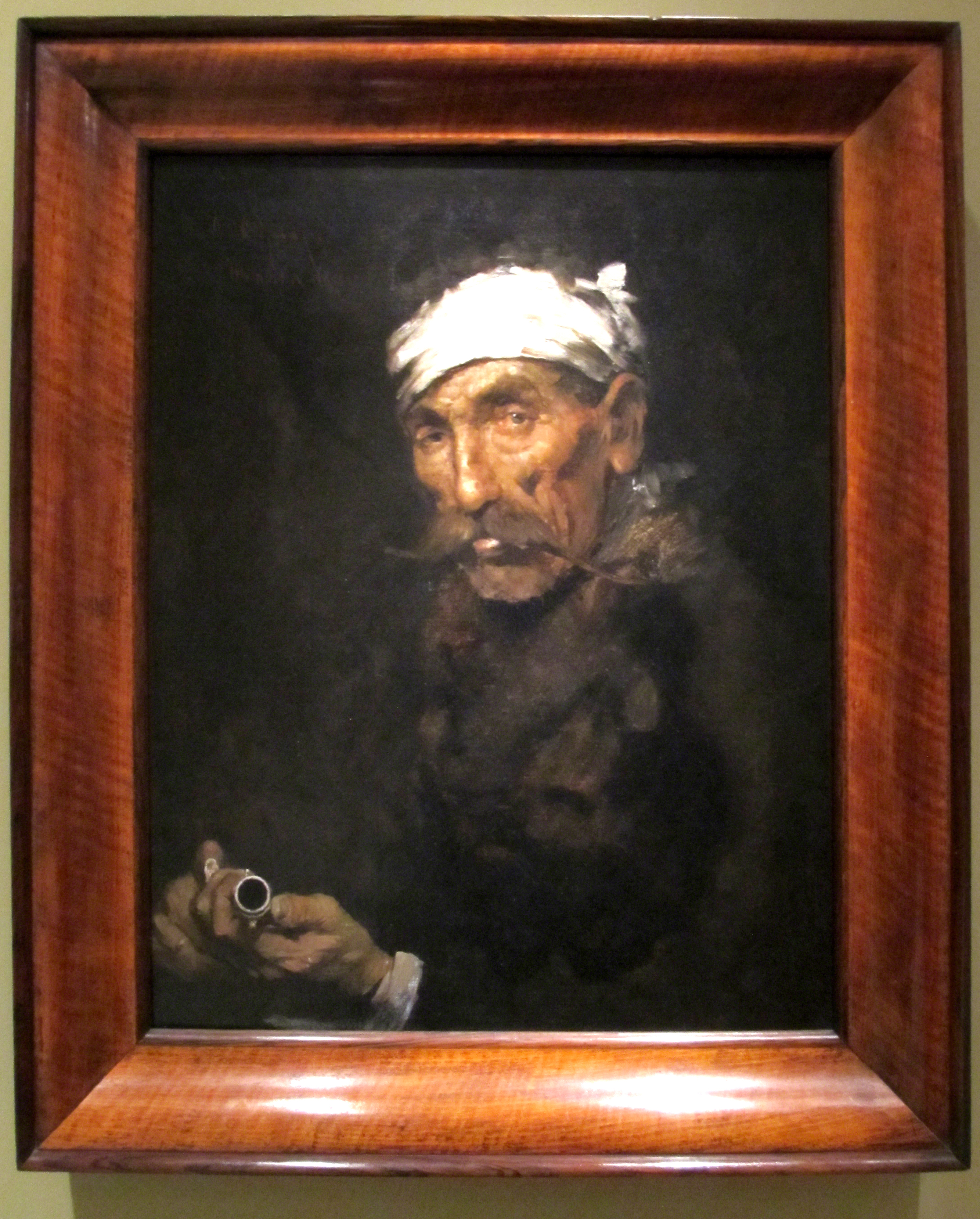
WILLIAM MERRITT CHASE (1949 – 1916)
The Wounded Poacher (The Veteran), oil on canvas, 1878, 24-7/8” X 18-15/16”; Late-19th century European frame, veneered exotics, rosewood and flame maple. Gift of James W. and Frances G. McGlothlin, 2009.310 “The craggy, weather-beaten face of a middle-aged man peers out of the murky background of this canvas. Beneath a stark, white head bandage, his gaze is direct and forceful, his manner and pose confrontational. The man’s expertly foreshortened hands maintain a tight grip on a highly illusionistic white clay pipe thrust into the viewer’s space like the barrel of a pistol – an impression shaped by the painting’s various titles conflating hunter with soldier. The Wounded Poacher, later known as The Veteran, is a consummate example of William Merritt Chase’s Munich period. Fresh from his studies at the Munich Royal Academy, Chase, who had trained at New York’s National Academy of Design from 1869 to 1872 before traveling to Germany, quickly established himself as a rising American star. The Wounded Poacher contains all the hallmarks of the progressive Munich school, from its dusky palette and alla prima (direct) painting technique to its moody subject. The picture marked the artist’s debut in the New York art world of 1878 and helped to secure Chase’s early reputation as “an older man and a riper artist…destined to produce great works.”⠀
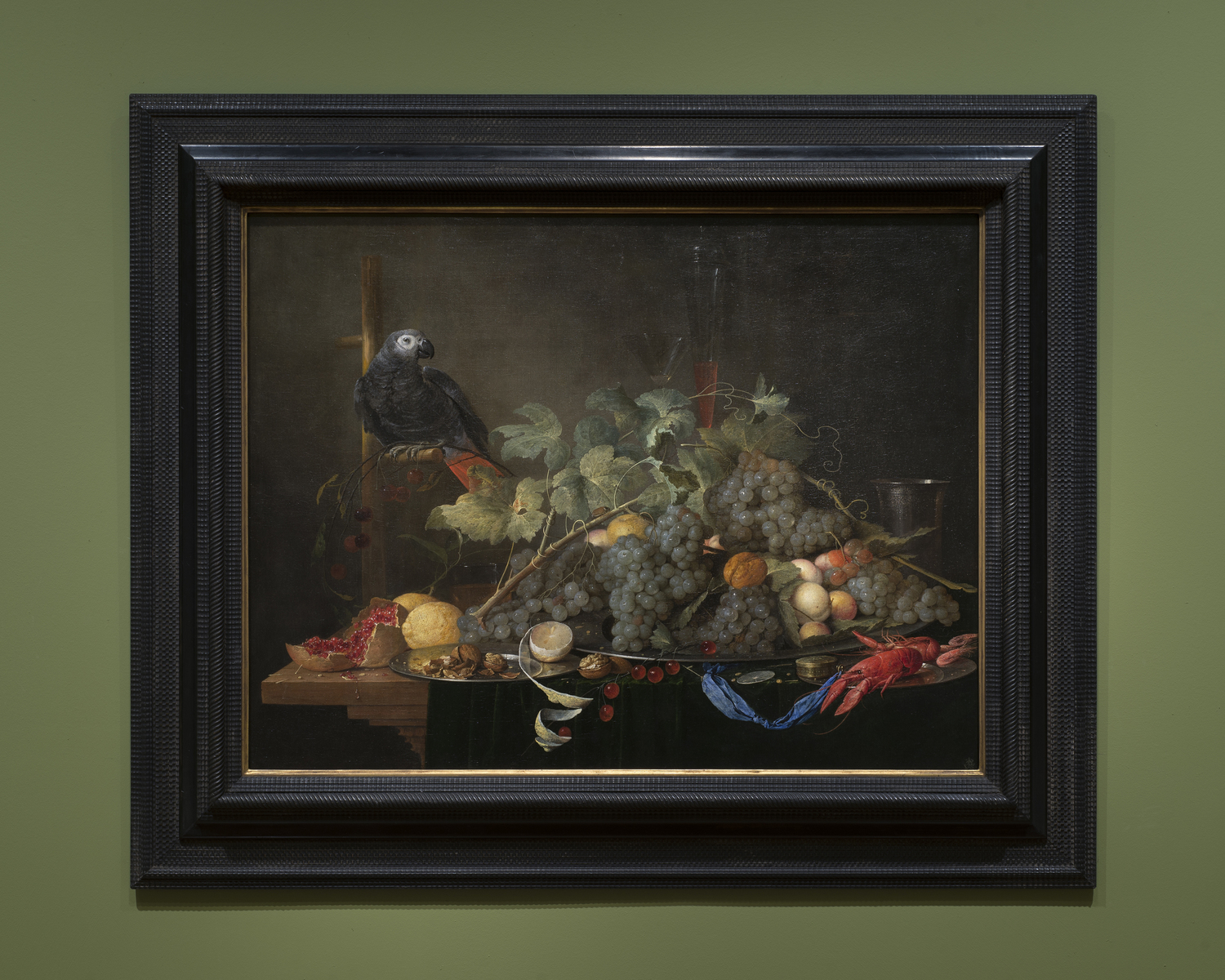
JAN DAVIDSZ. DE HEEM (1606 – 1684)
Still Life (with Gray Parrot and Lobster), 17th century, oil on canvas, 33-1/16” x 43-1/16”. 20th-century Dutch-style ebonized carved wood molding, chatter and basketweave patterned carving, reverse profile, gilded sight edge. Molding Width: 6-3/4" Virginia Museum of Fine Arts, Richmond. Arthur and Margaret Glasgow Fund, 61.15 Photo: David Stover.
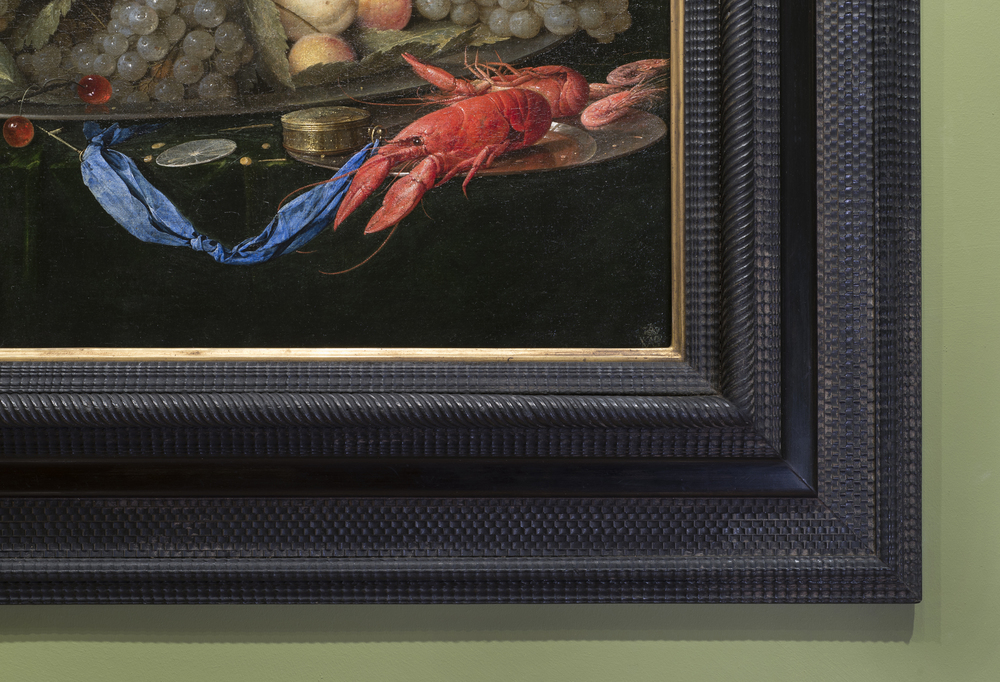
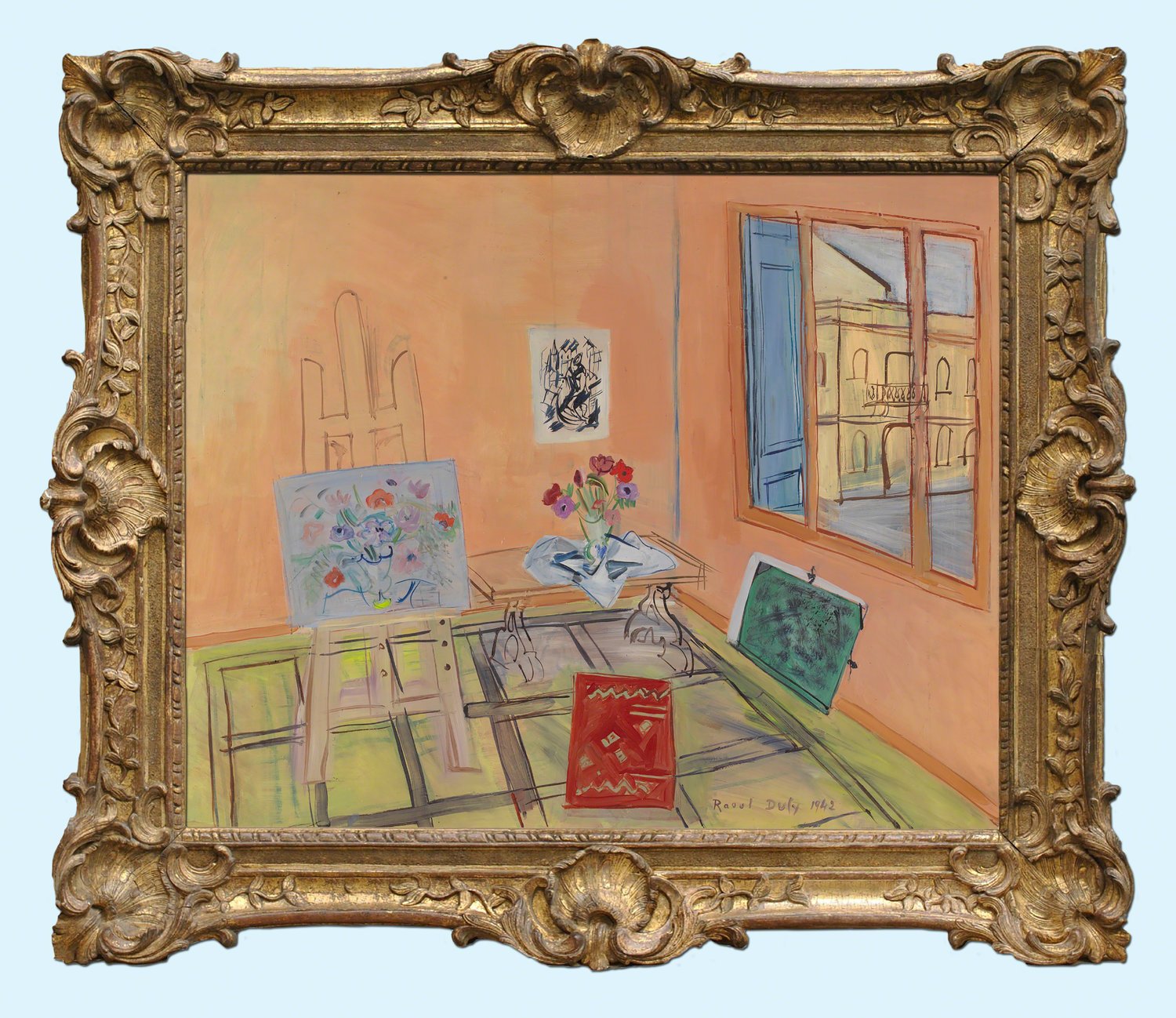
RAOUL DUFY (1877–1953)
L’Atelier au Bouquet, 1942, oil on canvas, 25-5/8 x 31-7/8 inches. Virginia Museum of Fine Arts, Richmond, VA. Collection of Mr. and Mrs. Paul Mellon. Framed by Gill & Lagodich, period 18th century French Louis XV painting frame gilded carved oak; swept profile, very refined example with exquisite gesso reparure, washed original gilding. molding width: 4-3/4 in.
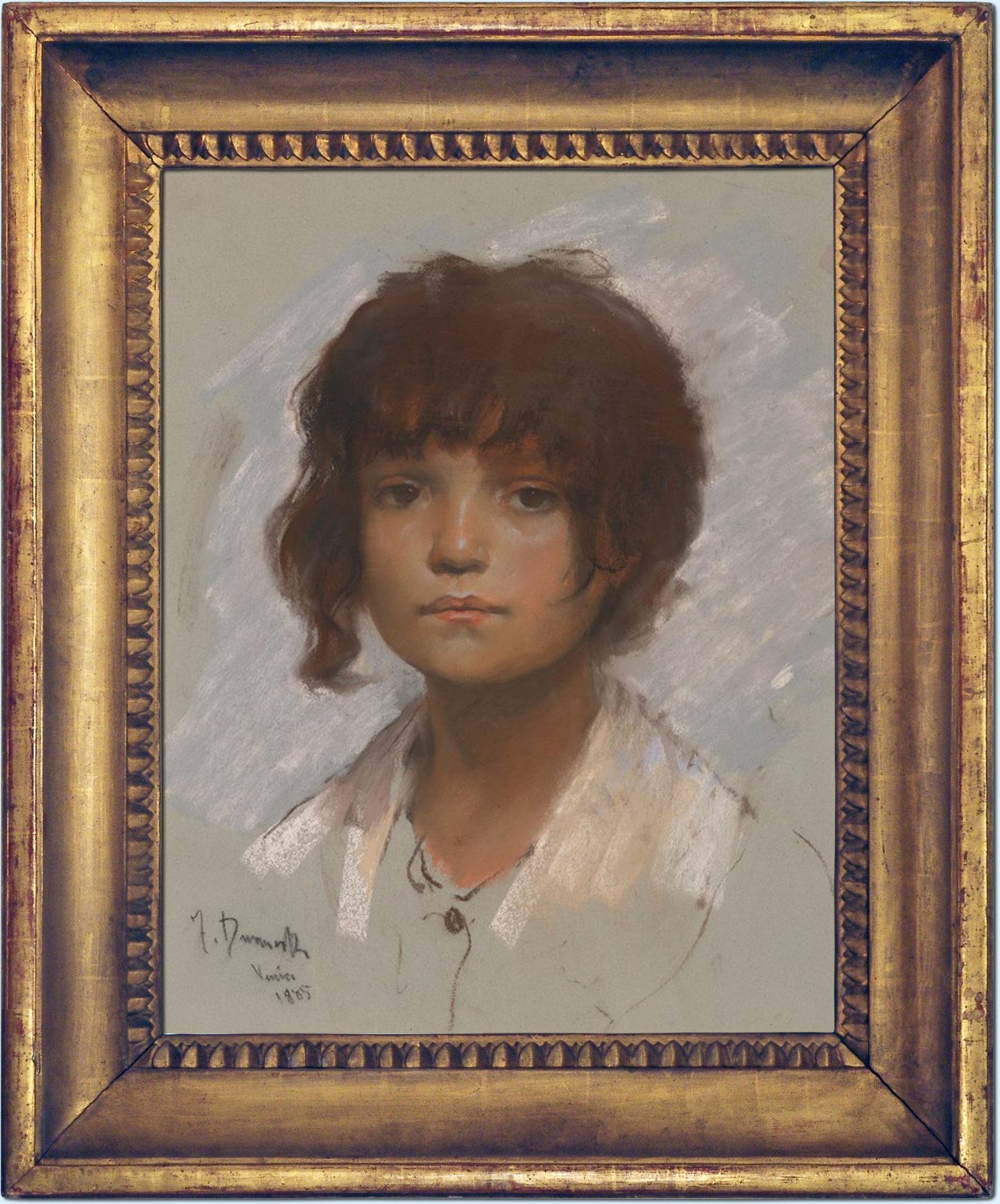
FRANK DUVENECK (1848–1919)
Gypsy Boy, pastel, 1885, 17-1/2" x 13-3/4", period 19th-century Italian gilded hand-carved wood frame. (Collection of Jane Joel Knox, promised gift to the Virginia Museum of Fine Arts, in loving memory of Irving Joel. ) Read an article in Richmond Home magazine about the generous collector and her loan of this pastel to the magical exhibit “Sargent, Whistler, and Venetian Glass: American Artists and the Magic of Murano,” on view at the Smithsonian American Art Museum through May 8. (And thence to Amon Carter Museum June 26-Sept 11, 2022, and Mystic Seaport Museum in Mystic, Connecticut Oct 15, 2022 – February 27, 2023)
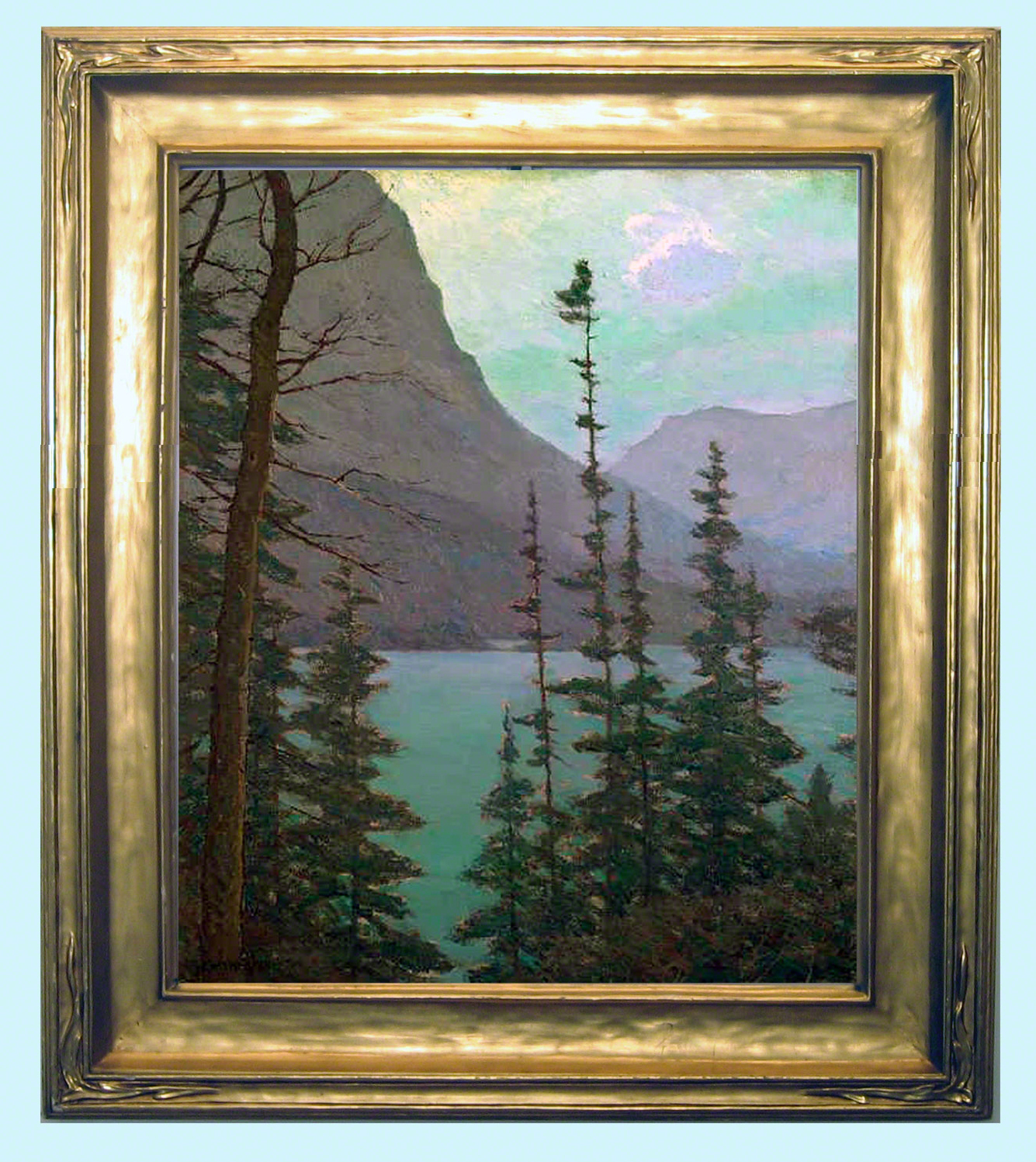
CHARLES WARREN EATON (1857 – 1937)
Glacier Park (Montana), 1921, oil on canvas, 24-1/8" x 20-1/8", period American Arts and Crafts Newcomb-Macklin frame, metal-gilded hand-carved wood.
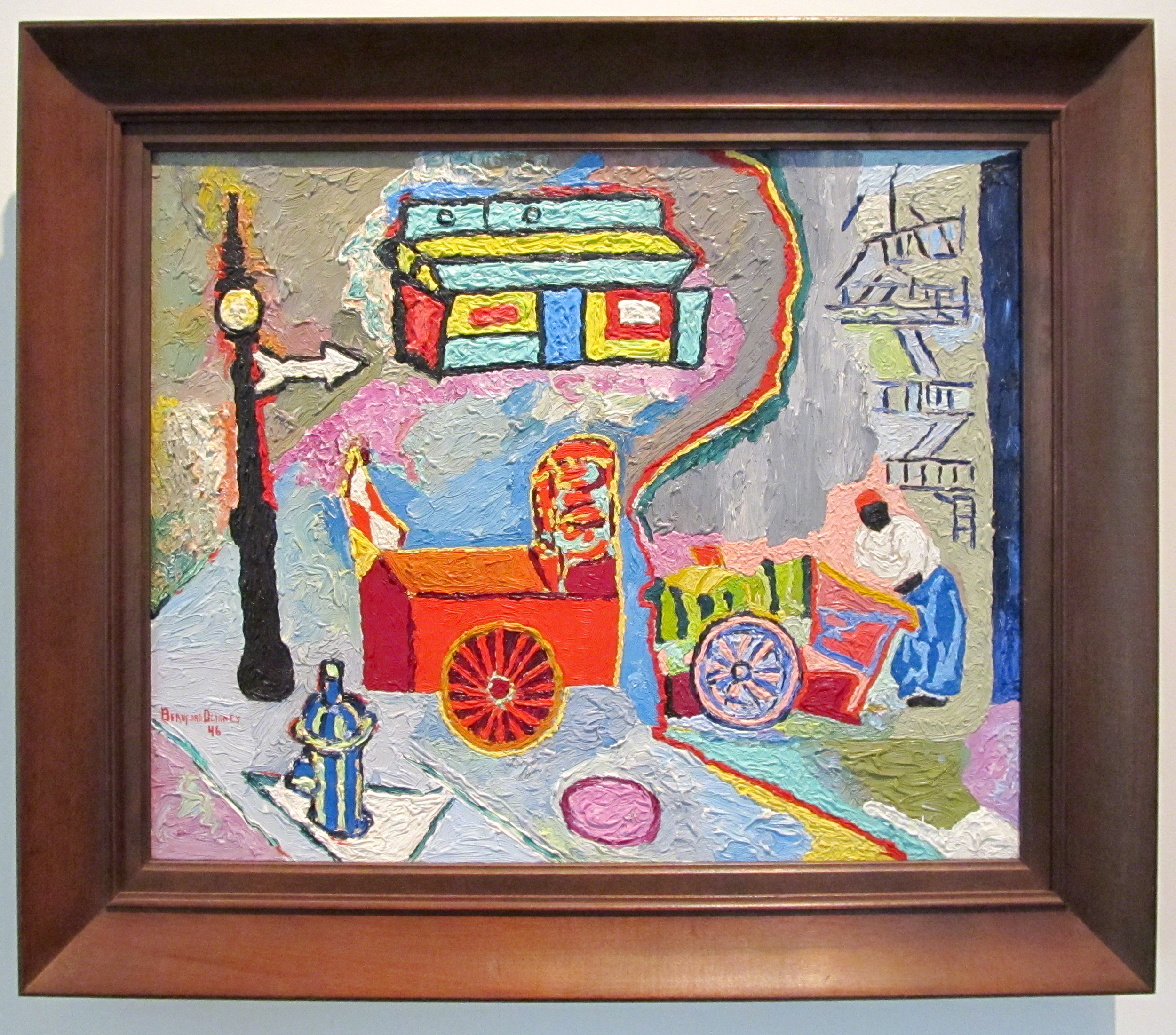
BEAUFORD DELANEY (1901-1979)
Greene Street, oil on canvas, 1946, 16" x 20", c. 1920 American stained wood molding frame.
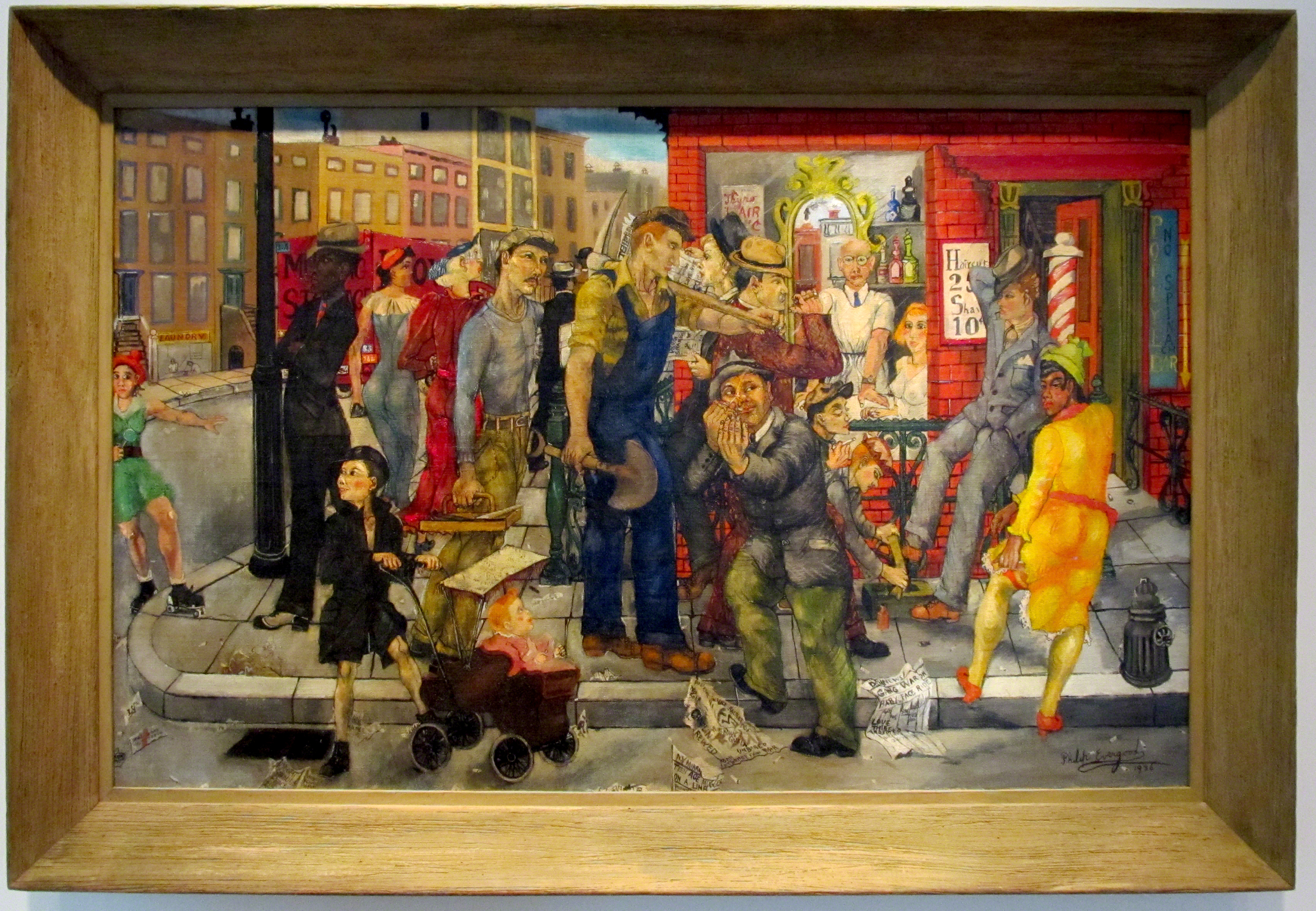
PHILIP EVERGOOD (1901 – 1973)
Street Corner, 1936, oil on canvas mounted to board, 29-15/16 x 50-1/16 in. Period 20th-century polychrome on wormy chestnut wood frame, molding width 4-3/16 in. VMFA: J. Harwood and Louise B. Cochrane Fund for American Art, 2010.4
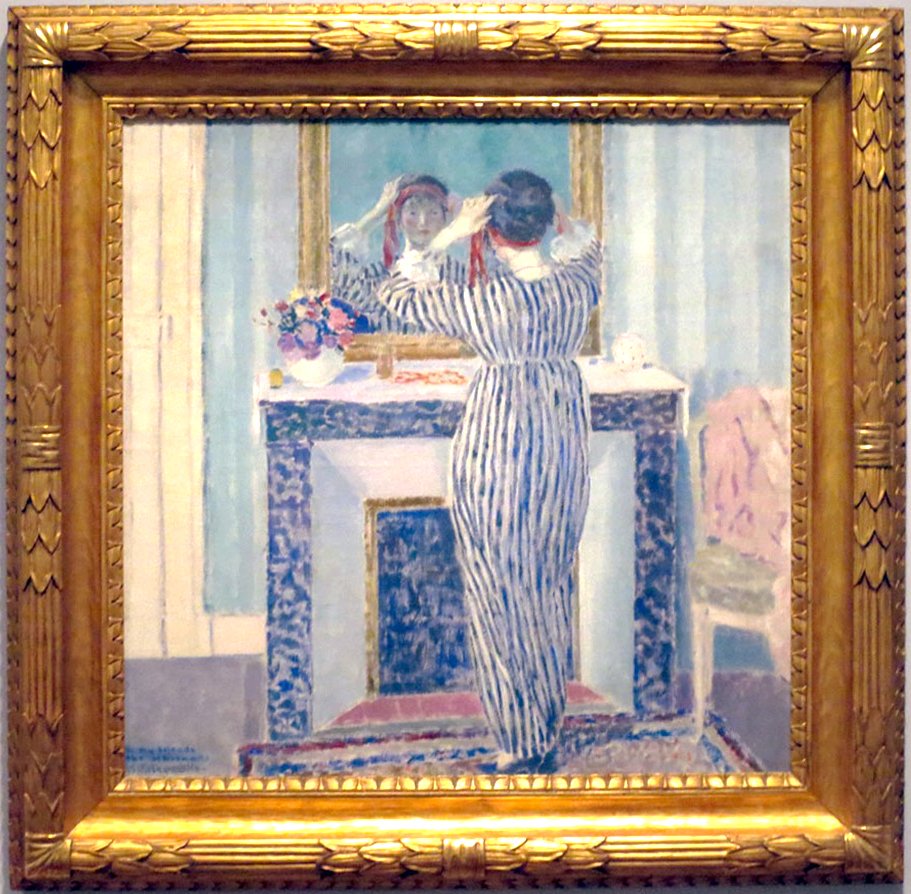
FREDERICK CARL FRIESEKE 1874 –1939
Blue Interior: Giverny (The Red Ribbon), ca. 1912-13, oil on canvas, 32 × 32 in. Period c. 1910-15 American Arts & Crafts painting frame; Foster Brothers, Boston, makers; gilded hand-carved wood; Neo-classical design, molding width 5-1/4 in. "I try as much as possible to make a mirror of the canvas,” Frieseke commented in 1914, two years after his impressionist interiors, garden scenes, and figure studies first captured the attention of American collectors. Living in the little French village of Giverny, made famous by Monet and his garden, the Michigan-born Frieseke was admired by Europeans before he became one of America’s best-known artists. By the end of his life, however, the prevailing winds of abstraction had swept him aside. Yet Blue Interior contains the seeds of that very abstraction. By dragging a dry brush over the canvas, Frieseke created a vibrant surface of pattern, color, and form tempered by a cool luminosity. He controlled the difficult square format, a hallmark for modernist thinking in the early 20th century, by placing his subject just off center and animating her with a slight twist.” —museum didactic label Painting: J. Harwood and Louise B. Cochrane Fund for American Art.


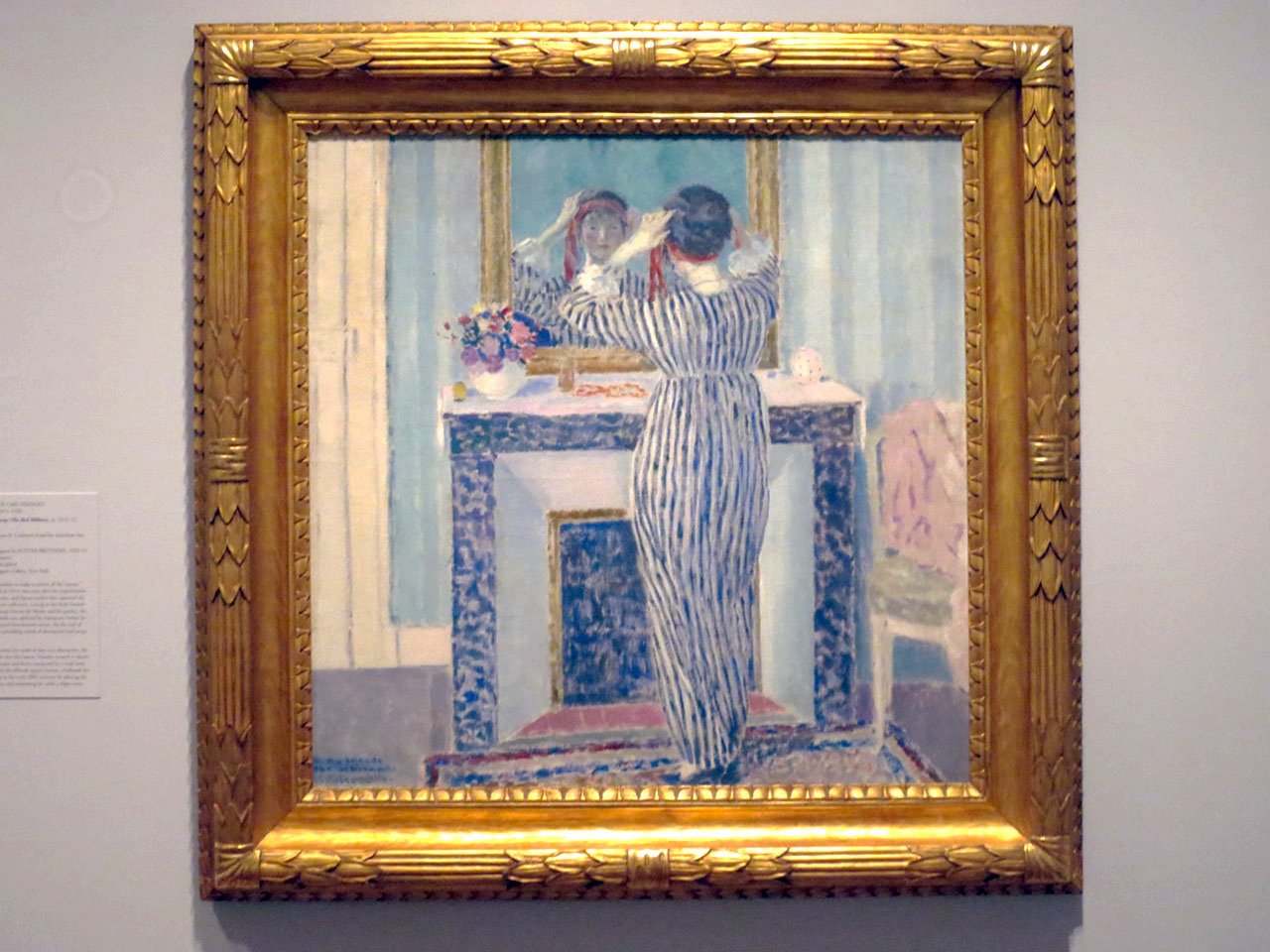
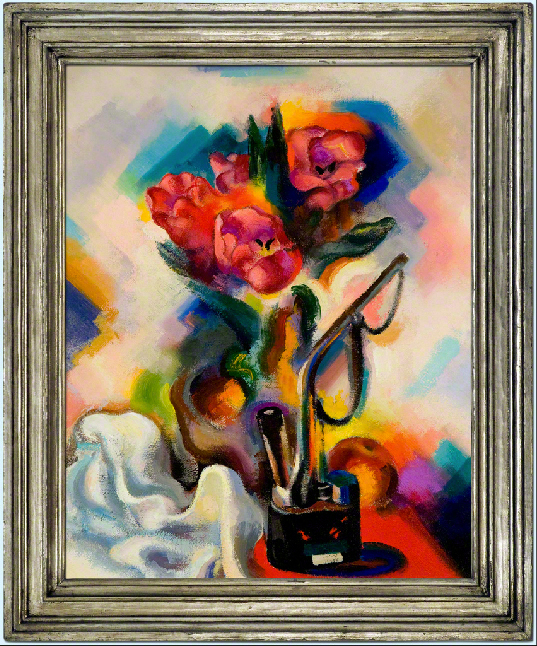
STANTON MACDONALD WRIGHT (1890 – 1973)
Chinese Pipe And Tulips, 1926, oil on canvas, 20-1/8" x 16-1/16", period American Arts and Crafts Newcomb-Macklin frame, aluminum-leafed hand-carved wood. J. Harwood & Louise B. Cochrane Fund for American Art, 2011.24
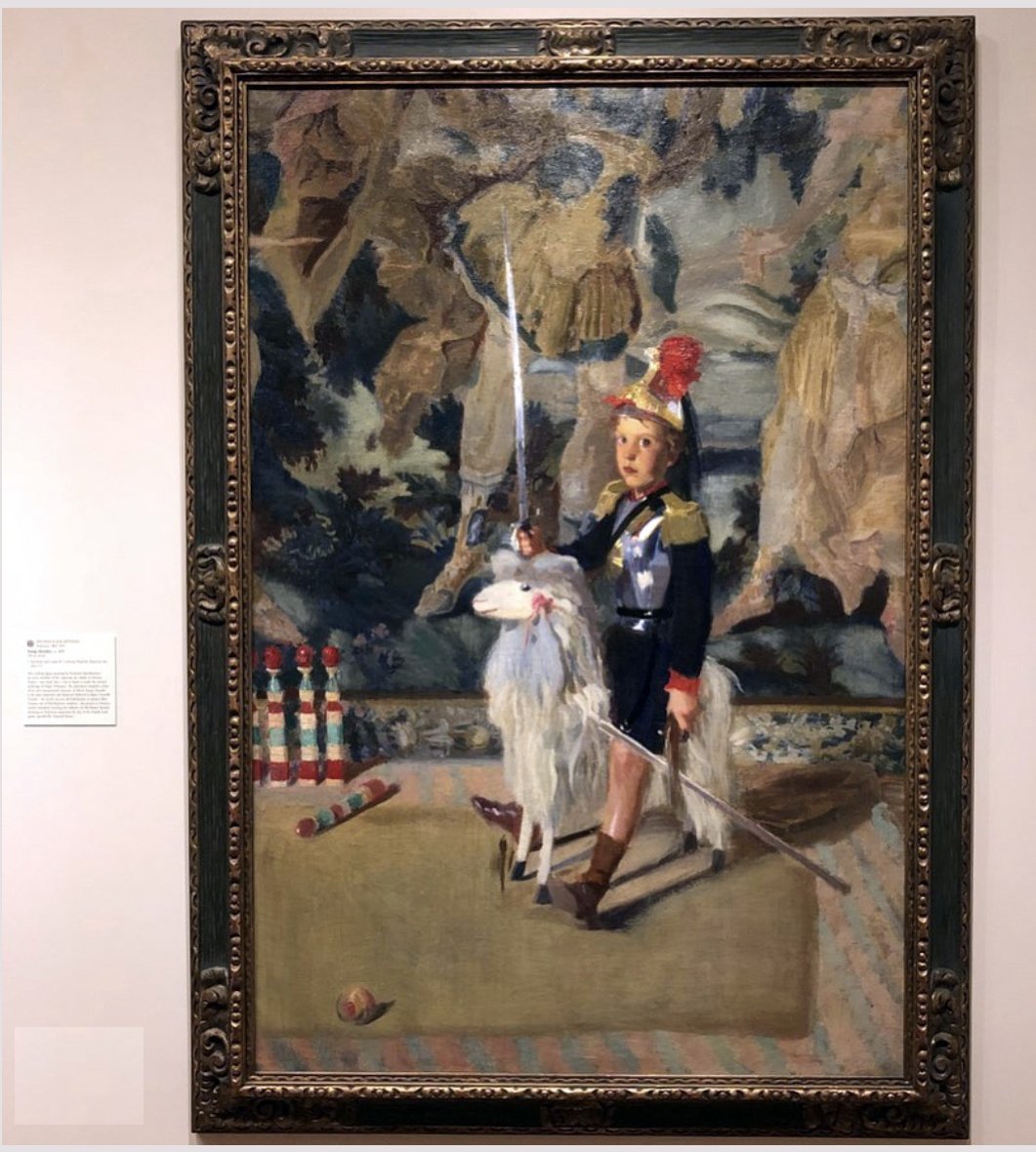
FREDERICK WILLIAM MACMONNIES (1863–1937)
Young Chevalier, ca. 1898, oil on canvas, 75-1/8 x 50-5/8 in. Period Early 20th-century American Spanish Revival painting frame, Roman-gilded applied composition ornament on wood, Newcomb-Macklin, New York Makers, molding width 5-1/8 in. The first major late 19th-century image of a child to enter VMFA’s American art collection. “This striking figure painting by Frederick MacMonnies – an active member of the expatriate art colony in Giverny, France – was made after a trip to Spain to study the revered paintings of Diego Velázquez. The experience inspired a series of MacMonnie’s own monumental canvases, of which Young Chevalier is the most impressive and theatrical. Believed to depict Grenville Hunter – the nearly six-year-old half-brother to painter Ellen Emmet, one of MacMonnies’s students – the picture is a bravura artistic statement revealing the influence of Old Master Spanish painting on American expatriates by way of the French avant-garde, specifically, Edouard Manet.” —museum label. Virginia Museum of Fine Arts, J. Harwood and Louise B. Cochrane Fund for American Arts. Frame Provenance: Collection Vance Jordan Fine Art, NYC.
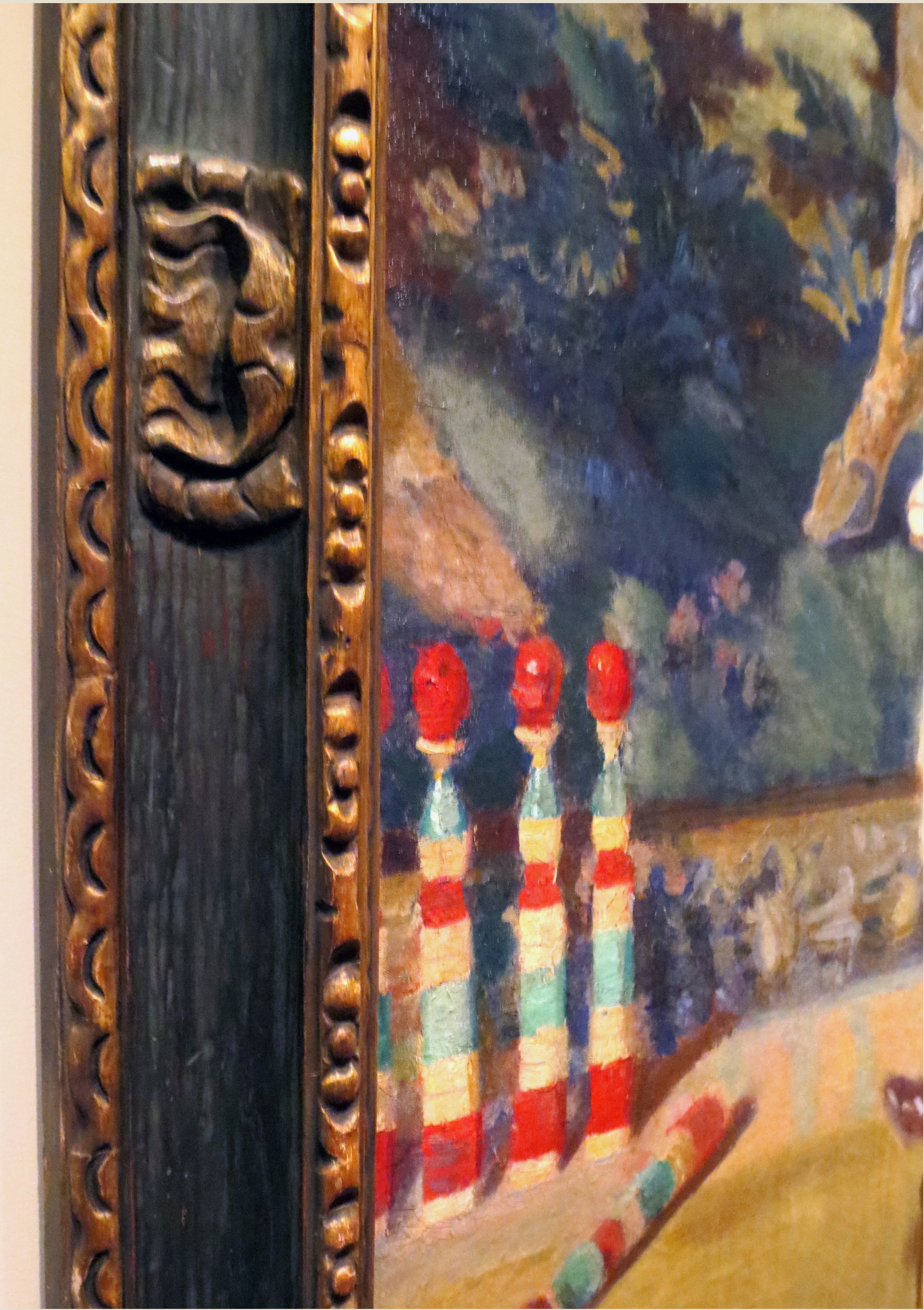
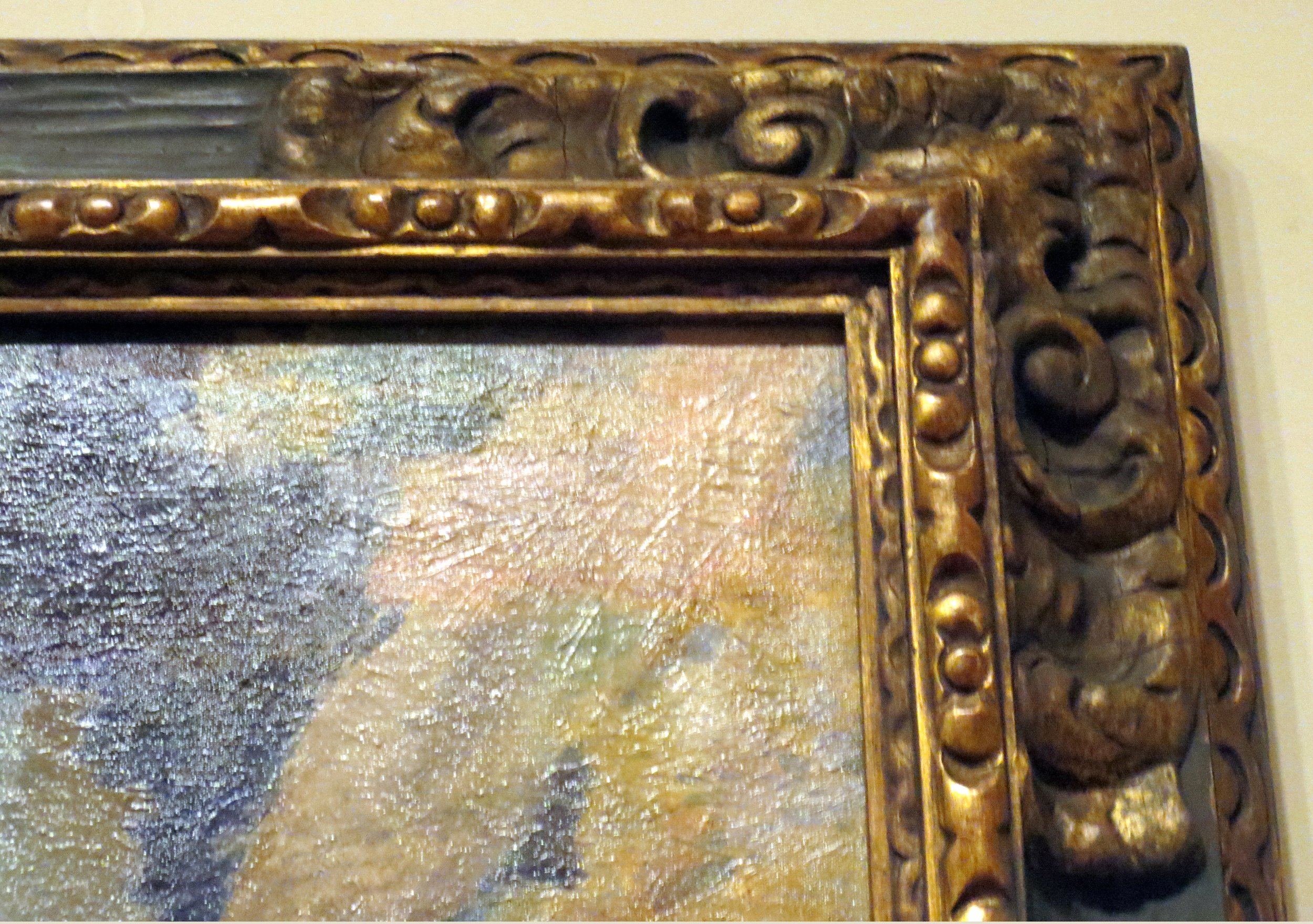
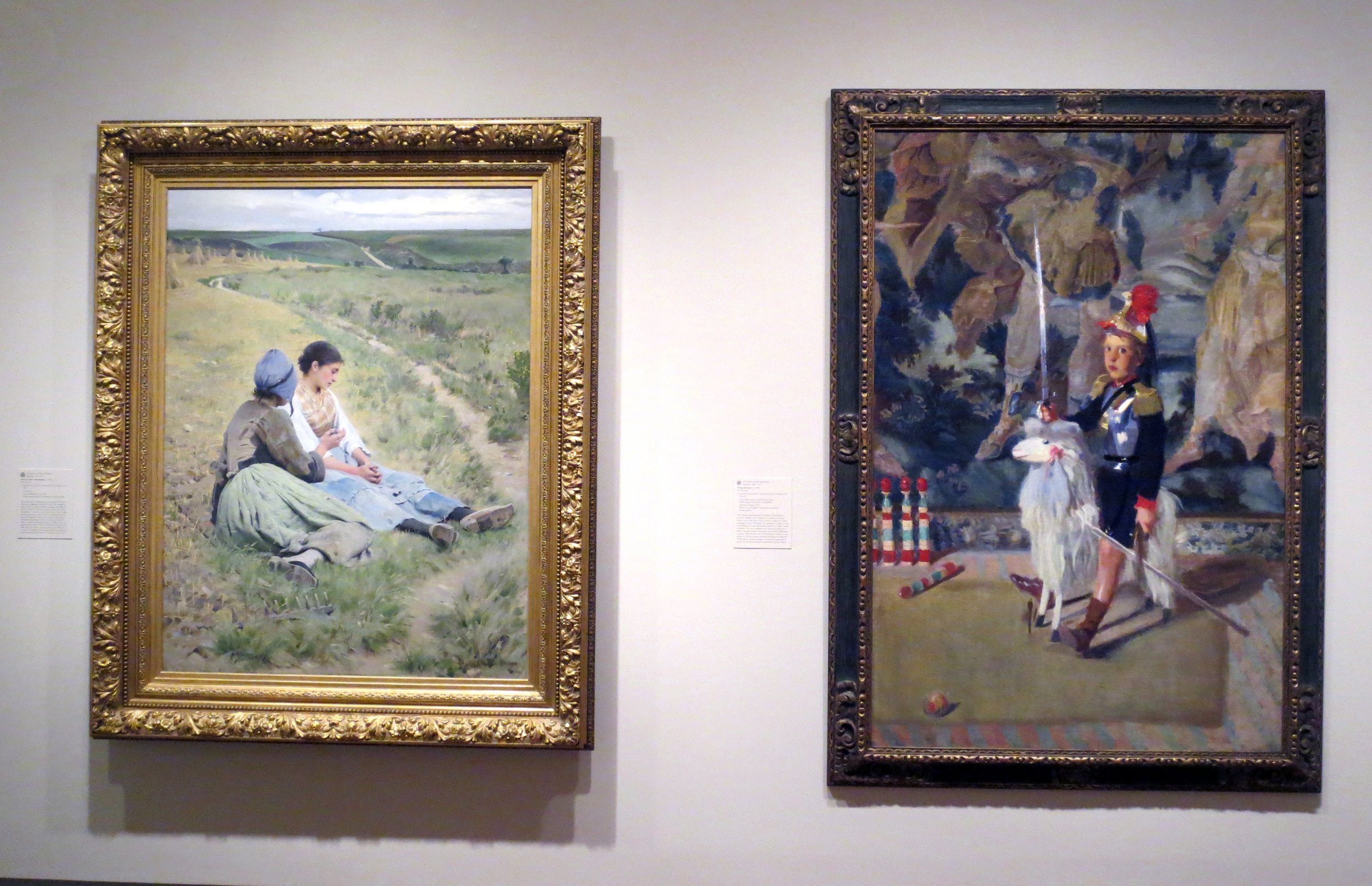
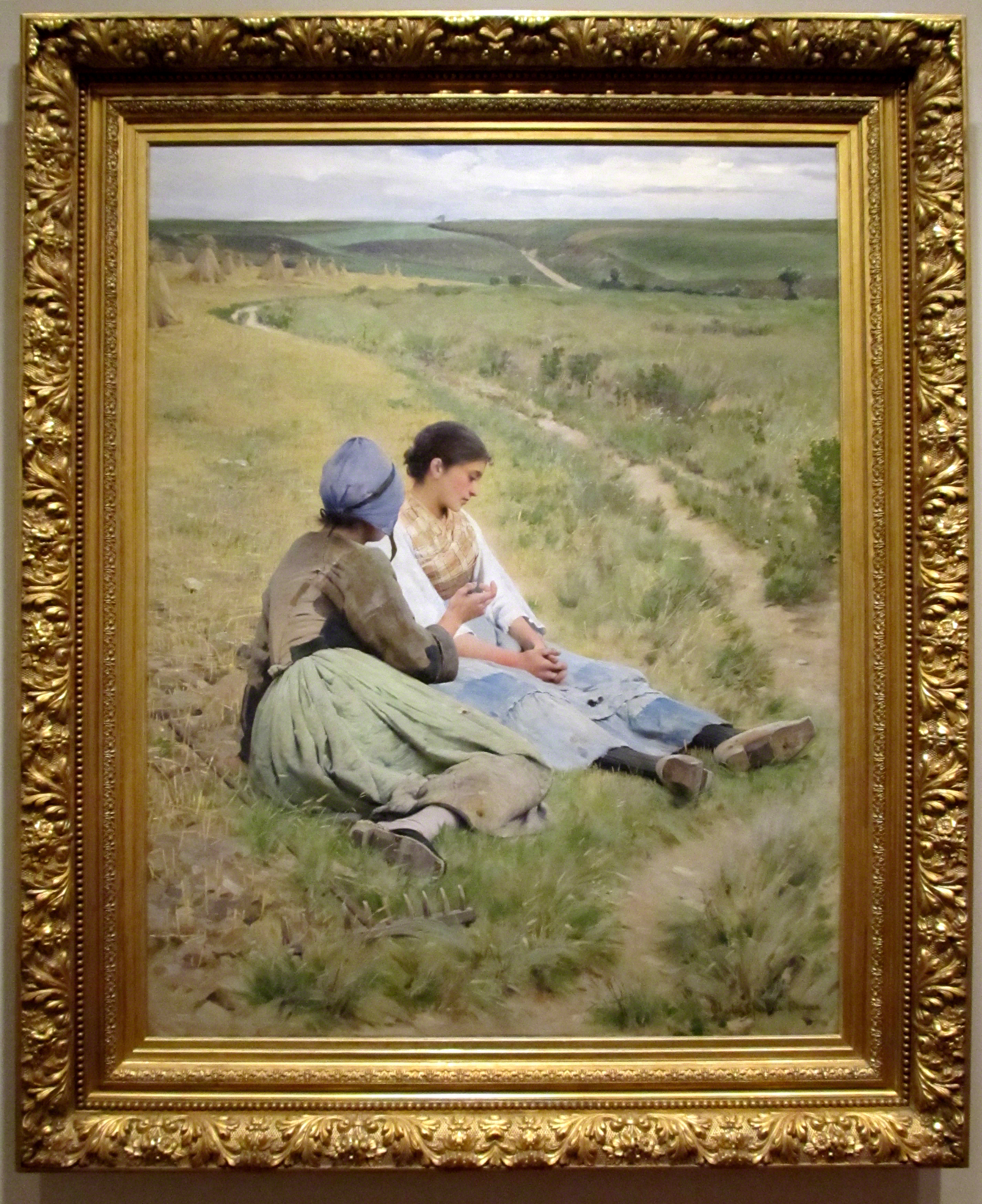
CHARLES SPRAGUE PEARCE (1851 – 1914)
Peines De Coeur, c. 1884, oil on canvas, 61” X 47”, period 1880s American Barbizon frame, molding width 8-1/2”. “Boston-born Pearce belonged to the generation of American artists who increasingly settled in France in the postbellum years. In 1884, he relocated from Paris to the rural village of Auvers-sur-Oise. “I want my peasants to be the real article,” he explained, “I want to see the fields and the trees, the hills, streams and country roads as they are.” Peines de Coeur was Pearce’s first painting produced in Auvers. In this narrative of loss and consolation, the artist reveals his considerable talents as a figure and landscape painter, blending realist and impressionist tendencies. When Peines de Coeur was exhibited at the 1885 Paris Salon, critics remarked on the “striking” effect of these combined styles and perspectives, harmonized by an encompassing natural light and luminous color scheme.”—VMFA label J. Harwood and Louise B. Cochrane Fund for American Art, 2007.17
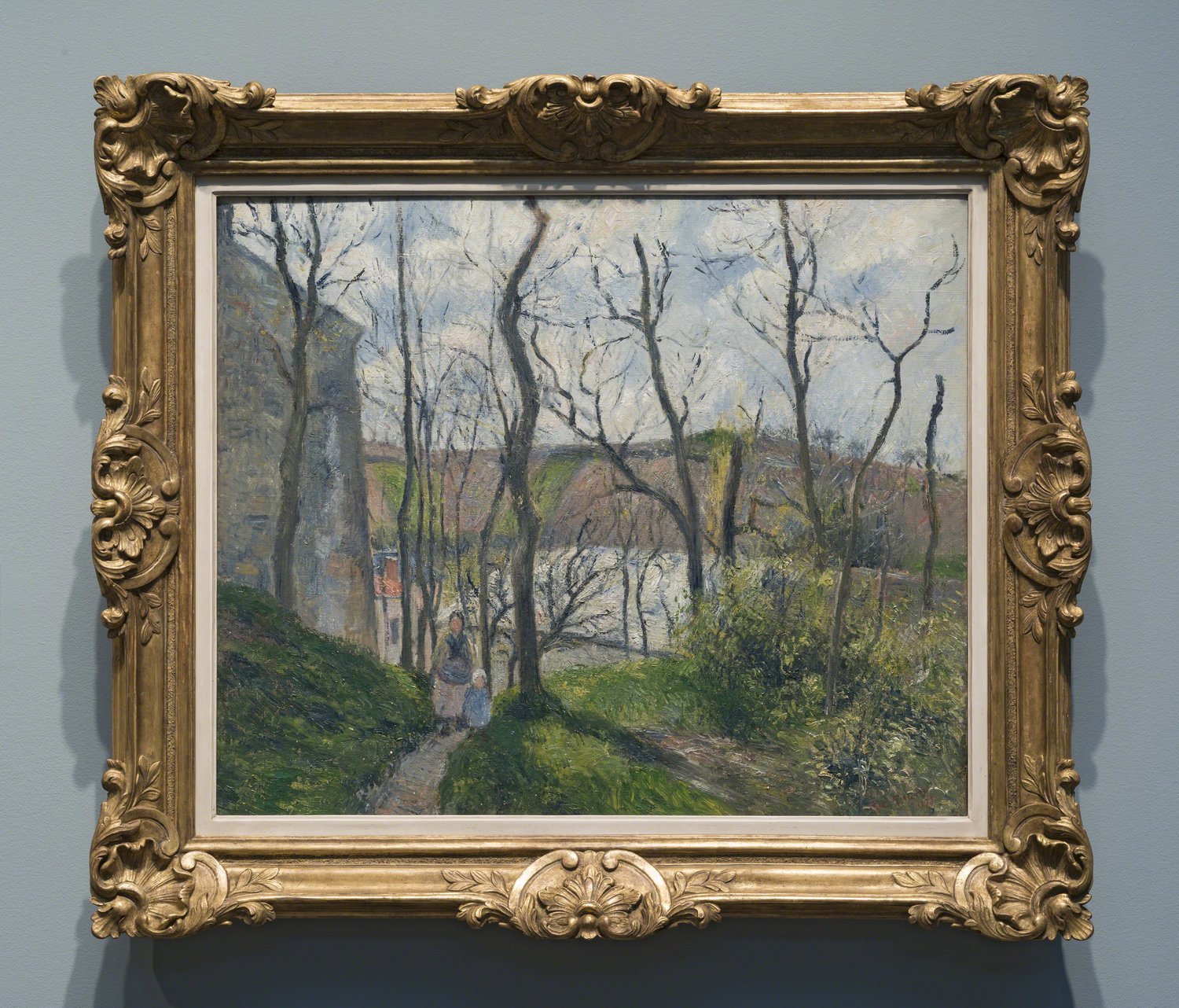
CAMILLE PISSARRO (1830–1903)
The Royal Palace at the Hermitage, Pontoise (Paysage a Pontoise), 1879, oil on canvas, 21-3/8 x 25-7/8 inches. Framed by Gill & Lagodich, period 19th-century French Regence-style painting frame; gilded hand-carved wood; added gessoed flat-and-hollow liner, molding width 4 in. “Nicknamed the “Royal Palace,” the building partially depicted here is situated in L’Hermitage, a neighborhood in the northwestern Parisian suburb of Pontoise. In 1872, Pissarro settled in Pontoise, where over the next decade, he executed some of his most radical landscapes often while painting side by side with Paul Cézanne.”—VMFA label. Collection of Mr. and Mrs. Paul Mellon. Photo: David Stover.
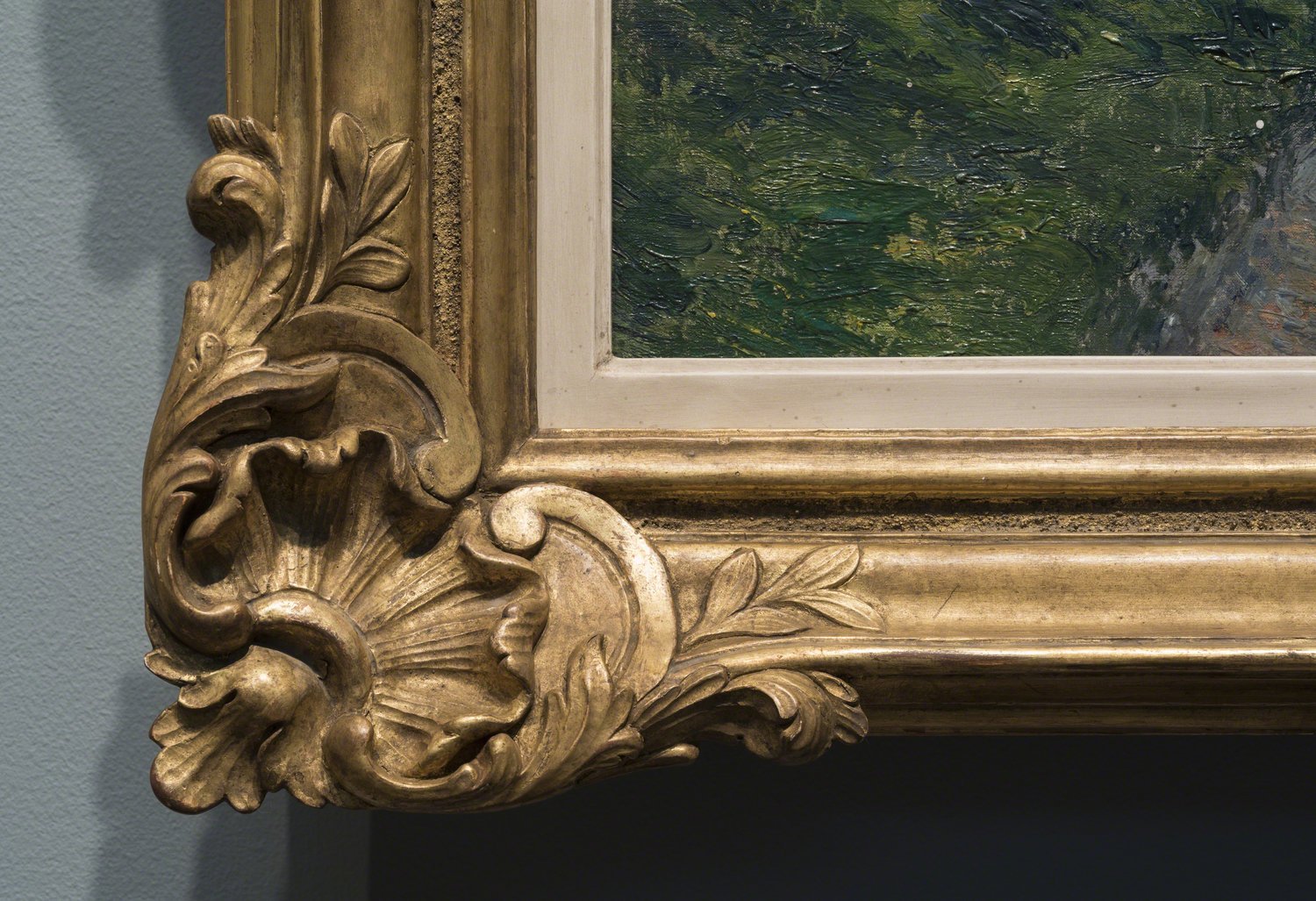
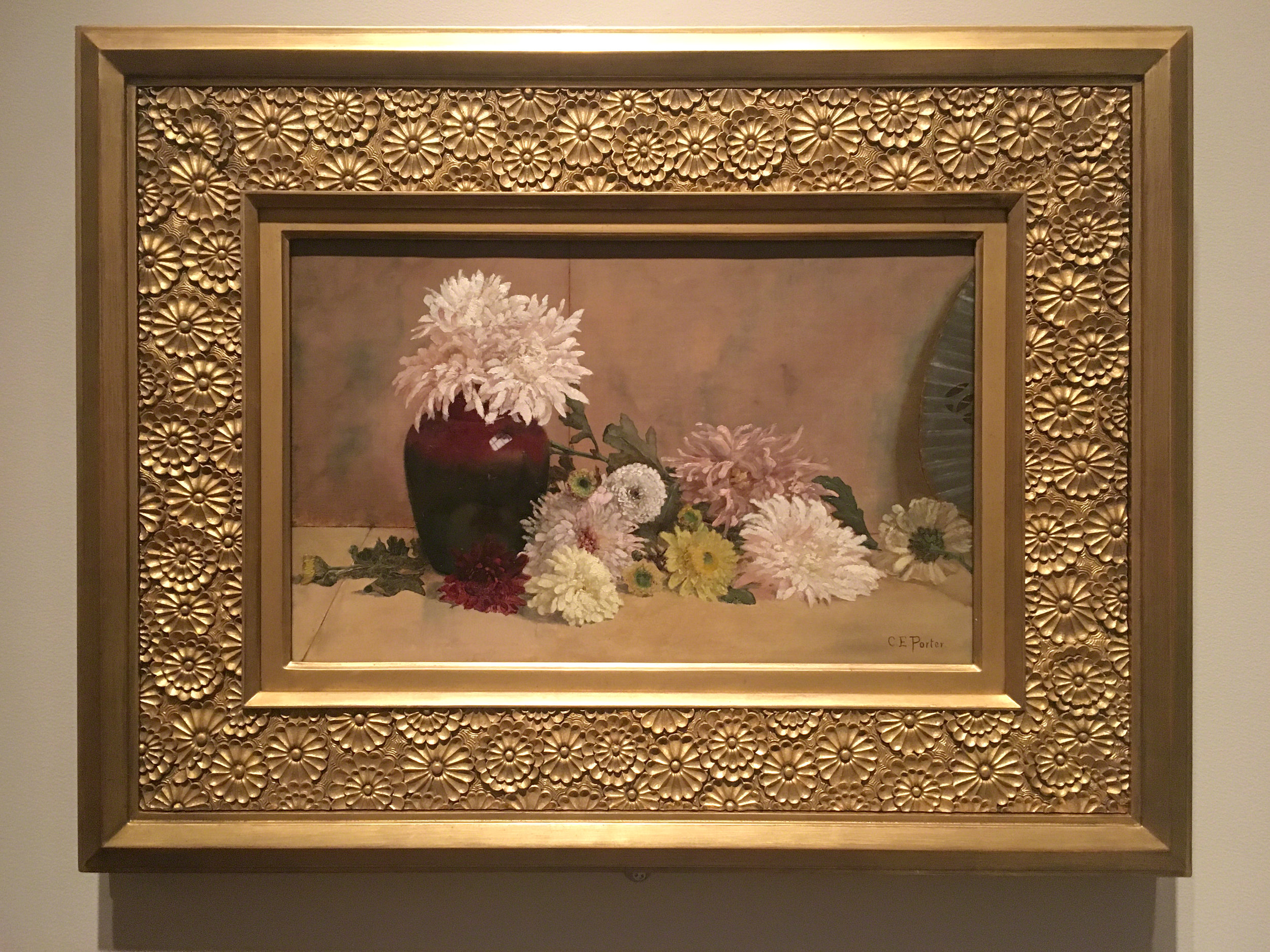
CHARLES ETHAN PORTER (1847–1923)
Chrysanthemums, ca. 1881, oil on canvas, 10 x 16”, framed by Gill & Lagodich in a custom-made variation of an 1880-90s American painting frame; gilded applied ornament on wood, Japonesque chrysanthemum pattern frieze; molding width: 4-1/2”. James Barton Payne fund.
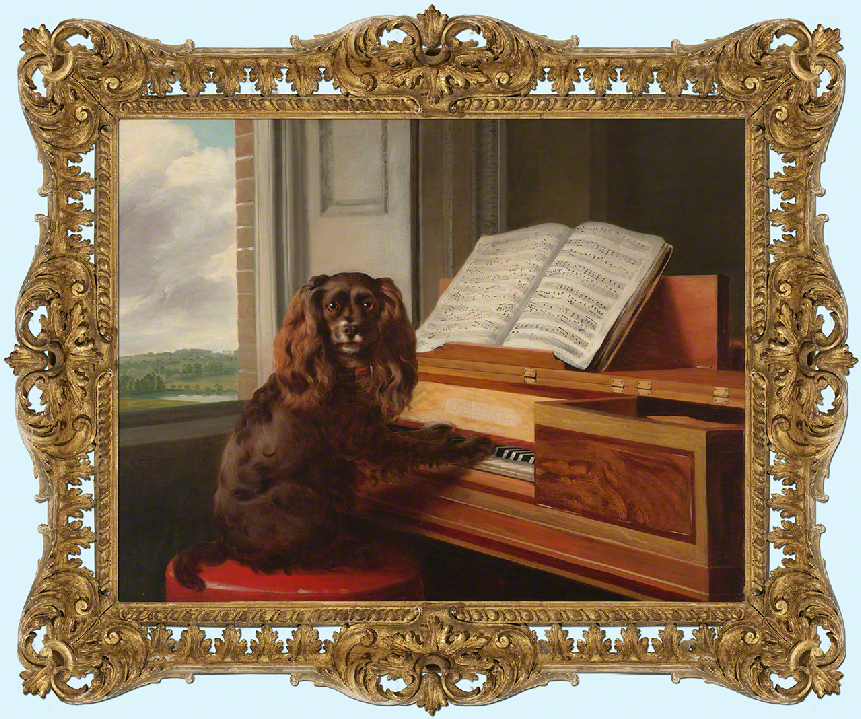
PHILIP REINAGLE, R.A. (1749 – 1833)
Portrait of an Extraordinary Musical Dog, oil on canvas, 1805, 28-1/4" x 36-1/2", period 18th-century English frame, swept profile, openwork rocaille, gilded hand-carved wood.
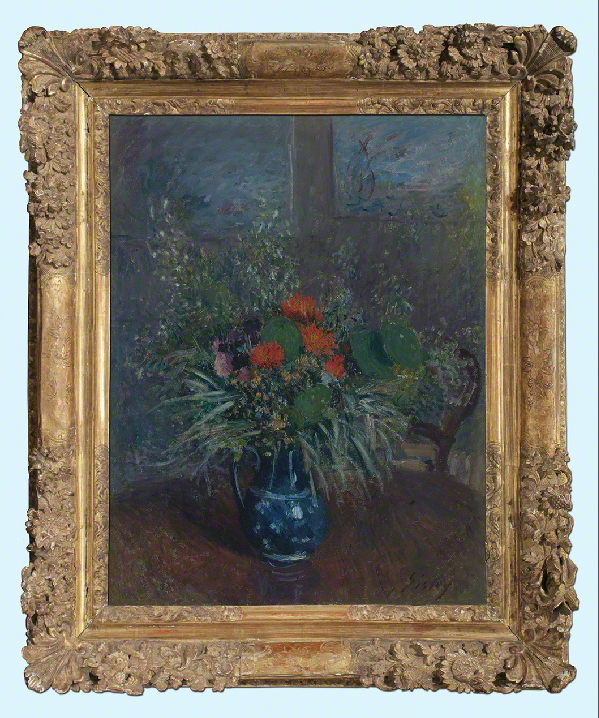
ALFRED SISLEY (1839 – 1899)
Wild Flowers, ca. 1875, oil on canvas, 25-3/4" x 19-7/8", period 18th-century French Louis XIII frame, gilded hand-carved wood. “Of the nine known still-life paintings by Sisley, this is the only flower subject. He approached the canvas in a characteristically Impressionist manner, depicting the play of light on a vase of flowers in front of a window. Unlike his landscapes of the early 1870s, which display a harmonious and tonal color applied by a broader brushstroke, this painting exemplifies Sisley's later style. The artist used an increasingly varied palette, evident in the bright red and pink tones accented by flecks of yellow in the floral arrangement. The brushstrokes are more vigorous and free, and Sisley applies the paint in juxtaposing directions to create a sense of movement in the work. The close framing of the vase and the obscure, sparsely rendered background confuses the viewer's immediate perception of the background's depth and perspective. The round table, chair, and unframed landscape paintings that hang on the wall become discernible only after scrutinizing the scene.”—VMFA label. Collection of Mr. and Mrs. Paul Mellon, 85.500
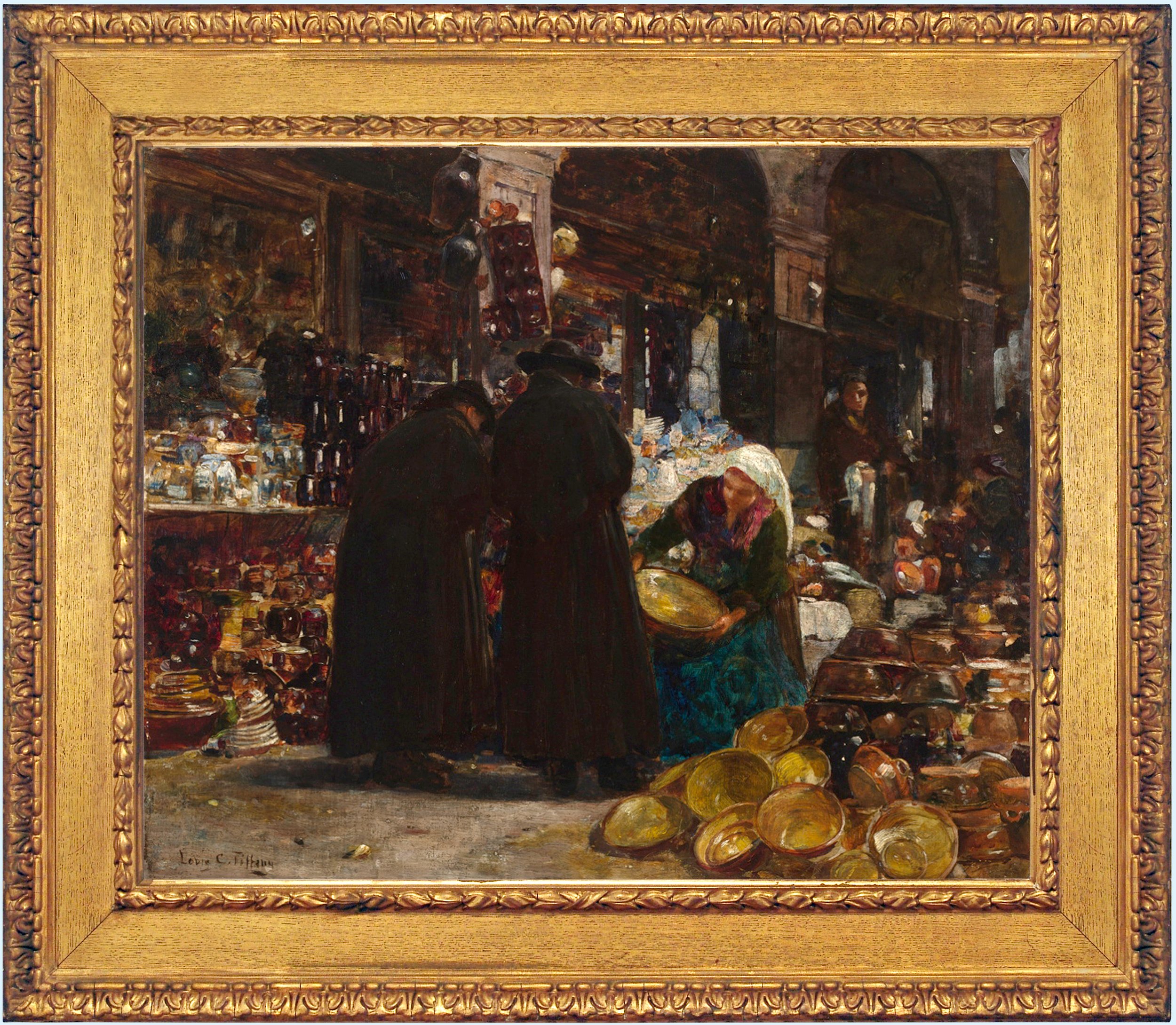
LOUIS COMFORT TIFFANY (1848–1943)
The Pottery Market at Nuremberg, oil on canvas, 1892, 23 x 28-1/8 in. 1890s English Watts style frame; applied composition ornament, gilded oak cassetta; molding width: 4-3/8 in.

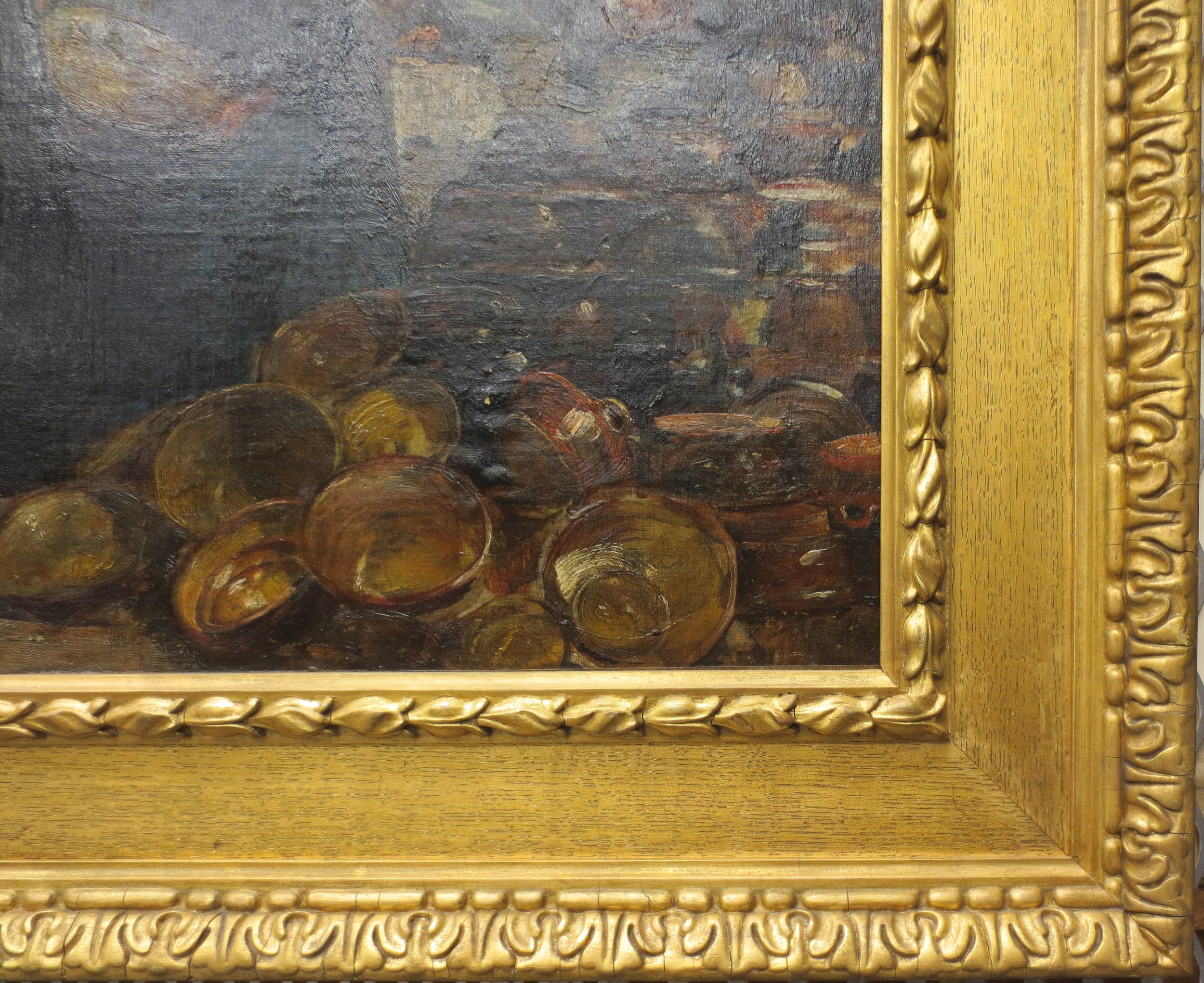
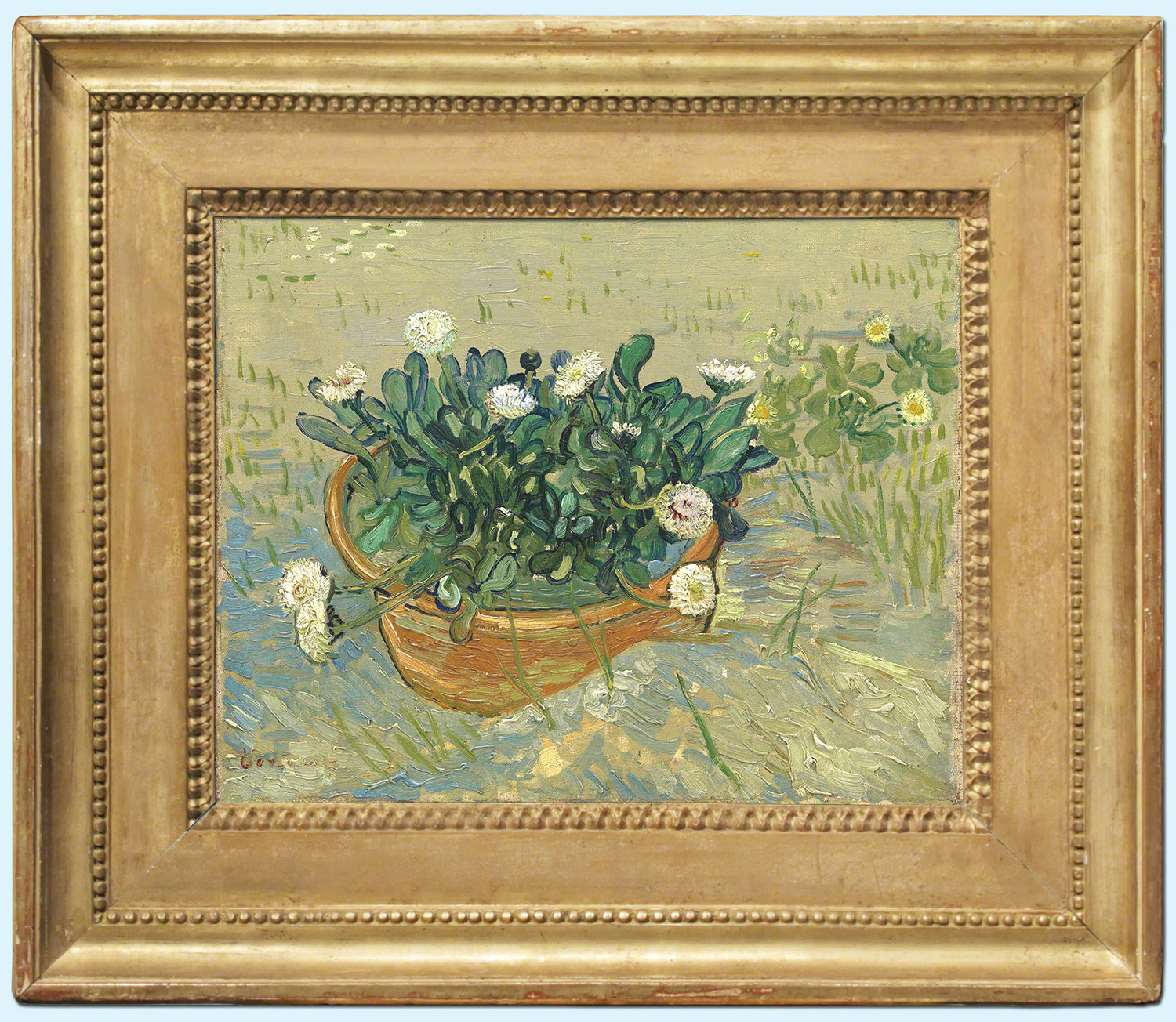
VINCENT VAN GOGH (1853–1890)
Daisies, Arles, Summer, 1888, oil on canvas, 13 x 16-1/2 inches. Virginia Museum of Fine Arts, Richmond, VA. Collection of Mr. and Mrs. Paul Mellon. Framed by Gill & Lagodich, period 18th-century French Louis XVI-painting frame; gilded carved wood; molding width 4 inches. “I’ d like to be able to attain that self-confidence that makes a person happy, cheerful, and lively at all times. That can happen much more easily in the country or a small town than in that Parisian furnace.” —Vincent van Gogh, to his brother Theo, September 1888 “In February 1888, van Gogh moved from Paris to Arles, where he hoped to establish his home, a “studio of the South” for artists to live and work communally. During the next fifteen months, van Gogh painted prolifically, developing a highly individual style through experimenting with new theories of complementary color, Japanese-inspired compositional techniques, and personal symbolism. This close-up still life of an unassuming, even weed-like, flowering plant demonstrates the artist’s attentive study of humble and familiar subjects. It was painted during the same summer in which he began his decorative Sunflowers series in preparation for the arrival of Paul Gauguin.” VMFA Collections label.
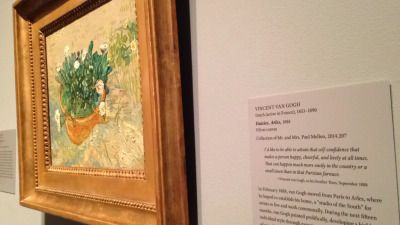
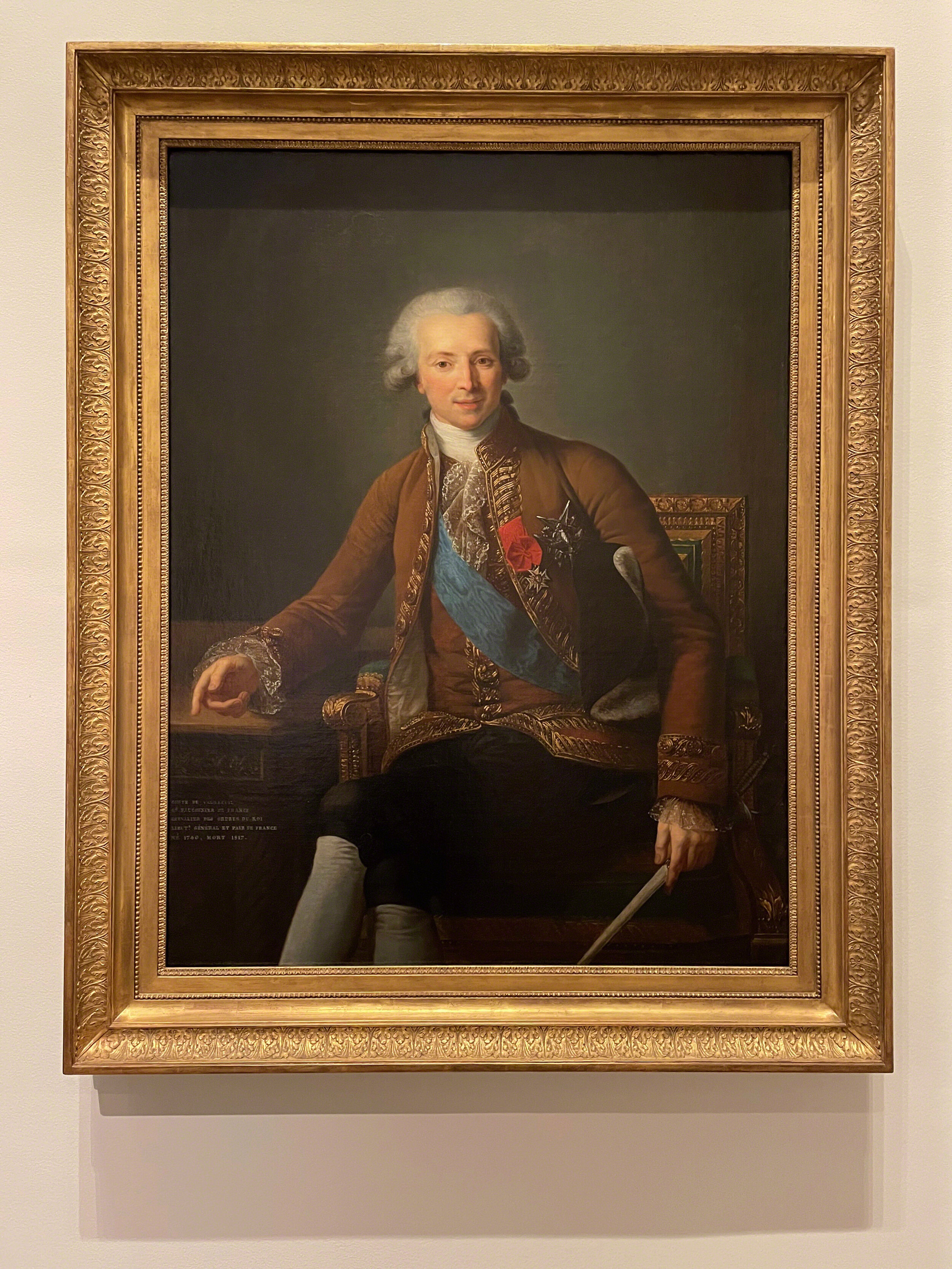
ELISABETH LOUISE VIGEE-LEBRUN (1755–1842)
Portrait of Joseph Hyacinthe Francois de Paule de Rigaud, Comte de Vaudreuil, 1784, oil on canvas, 52 x 38-7/8 inches. Custom-made replica, Late-18th to early 19th-century (transitional) French painting frame, gilded applied ornament on wood, molding width 5-1/8 in.
